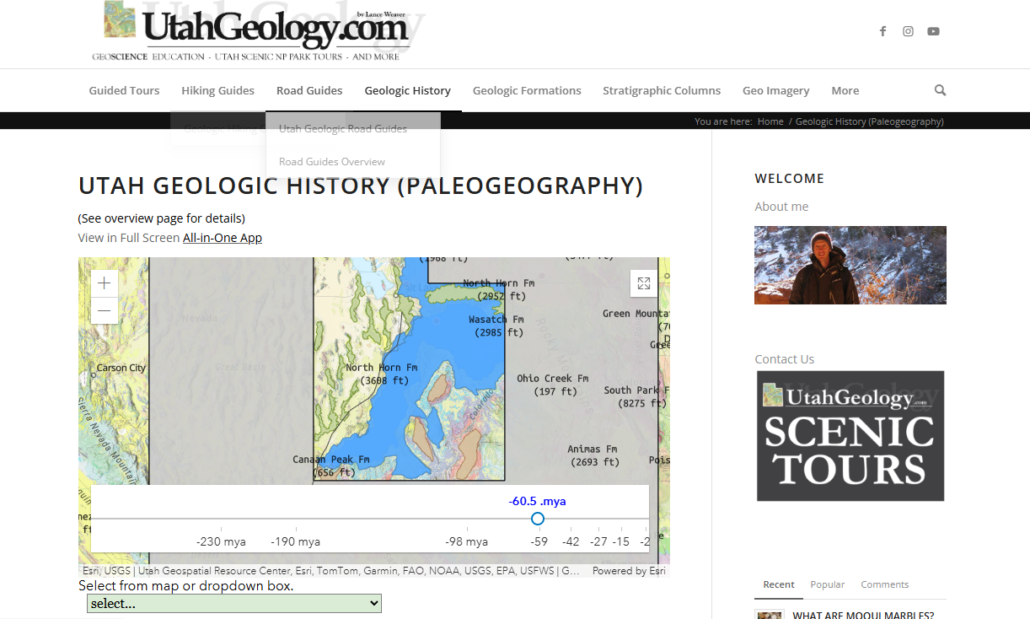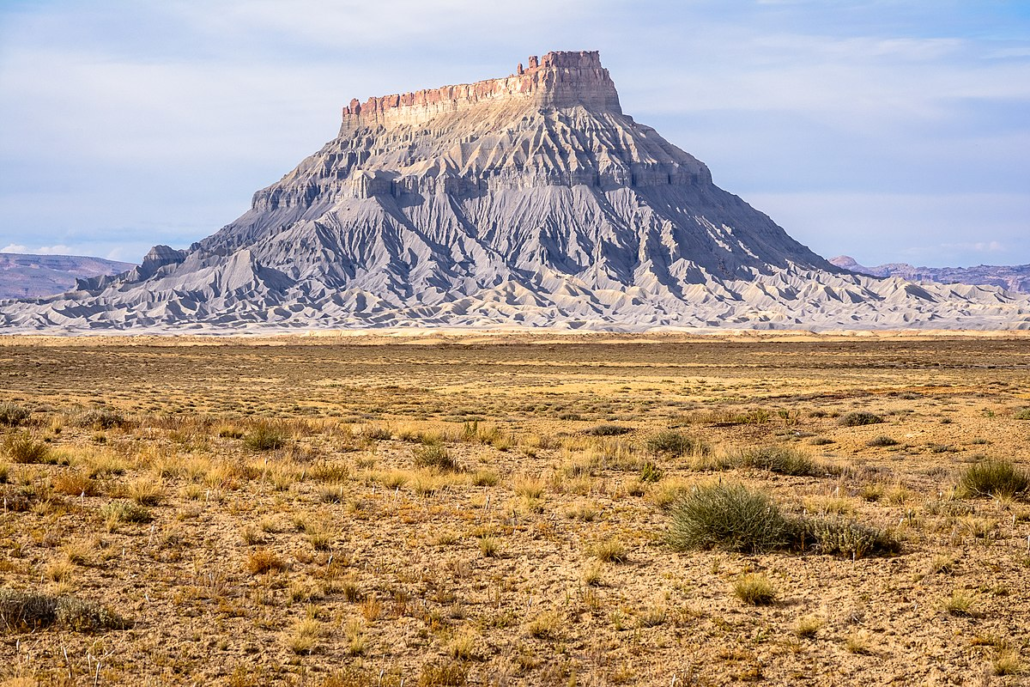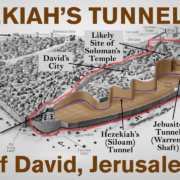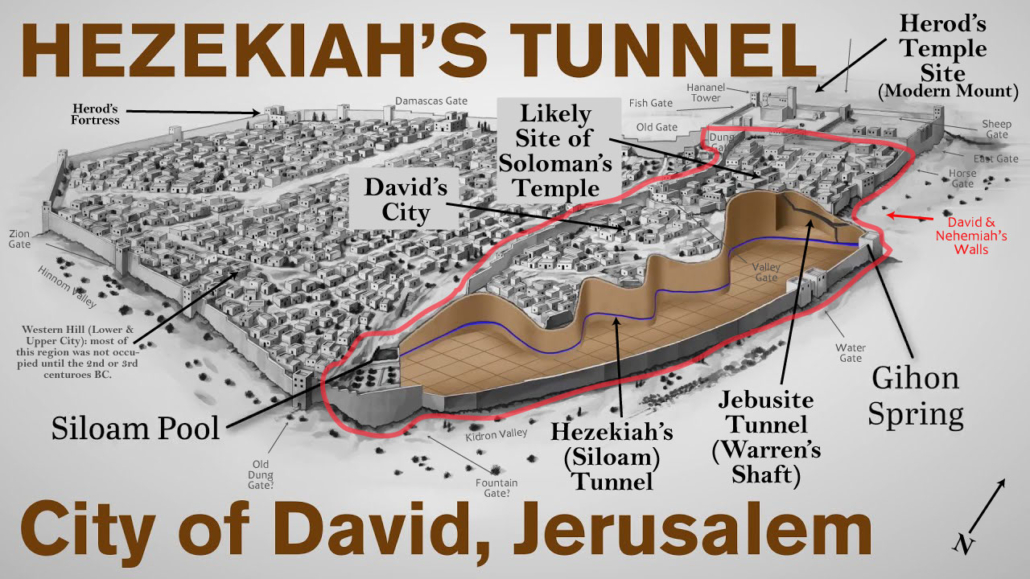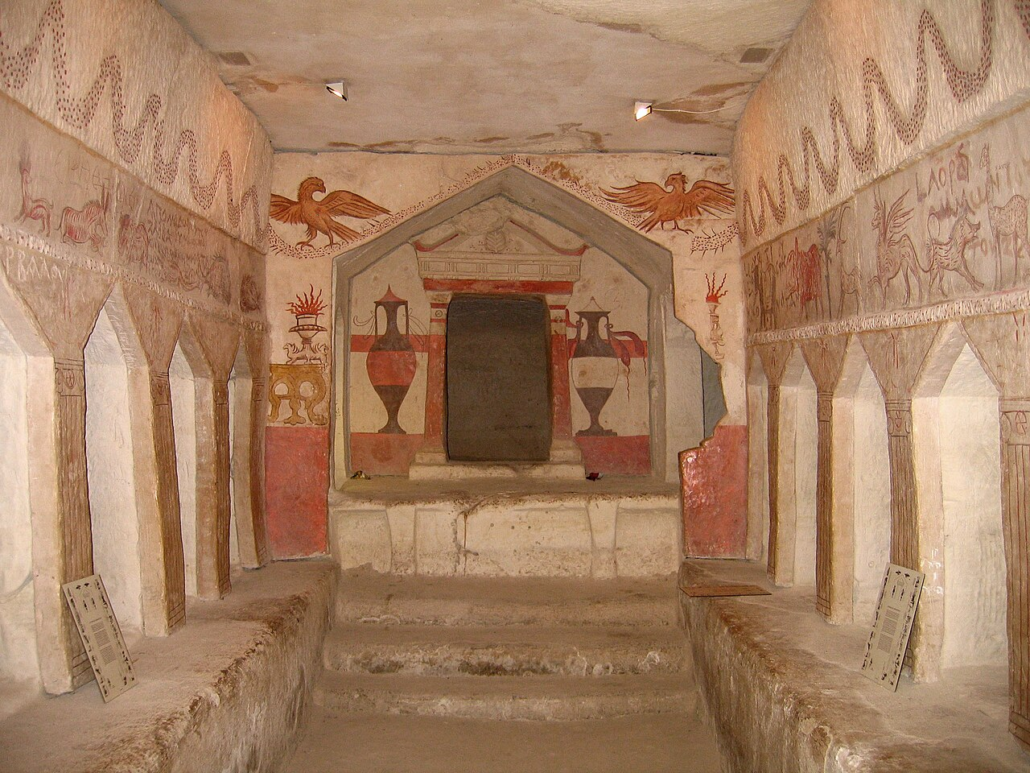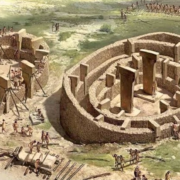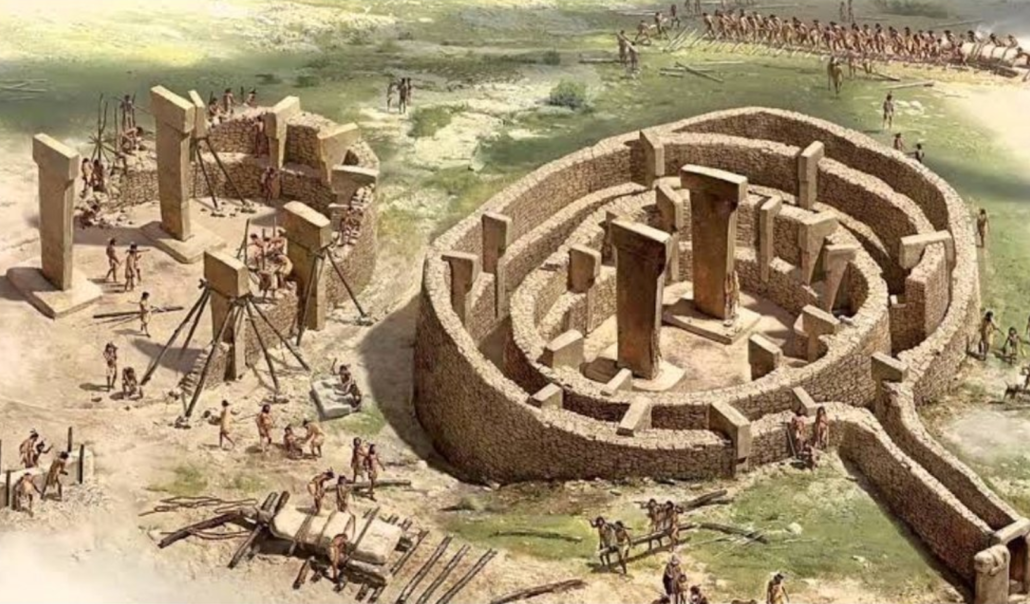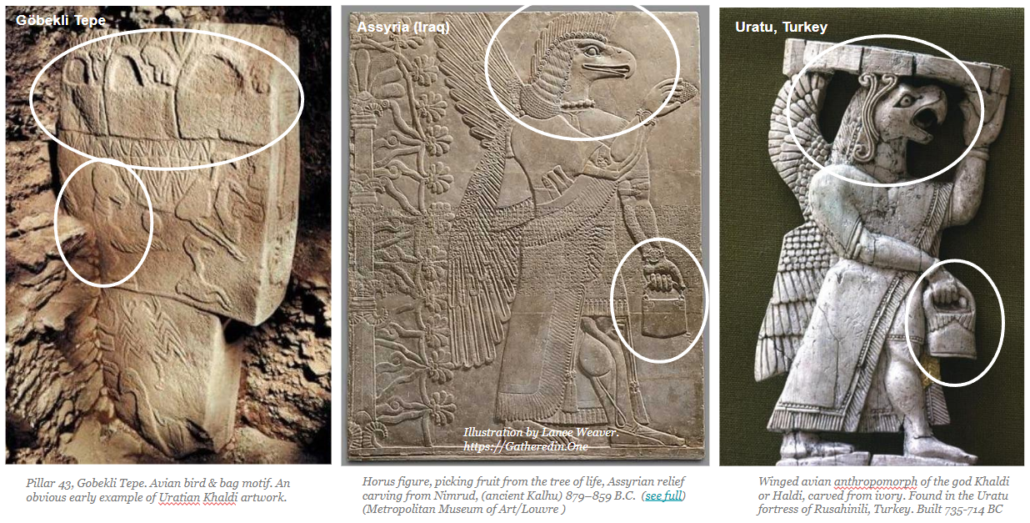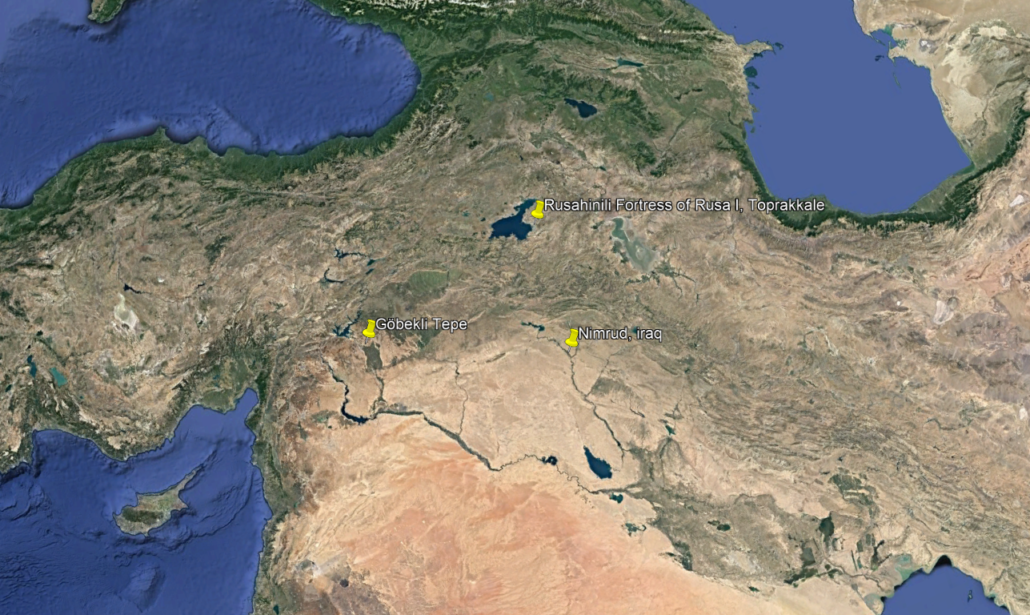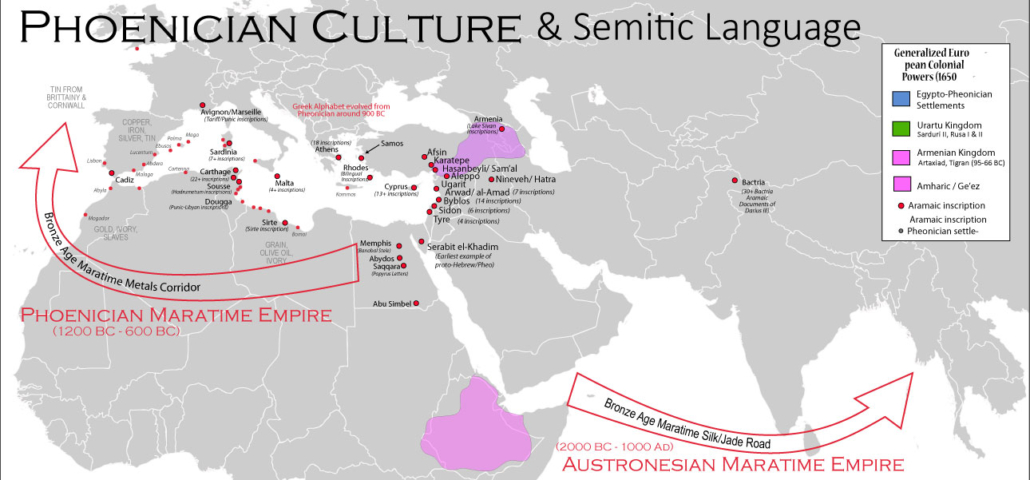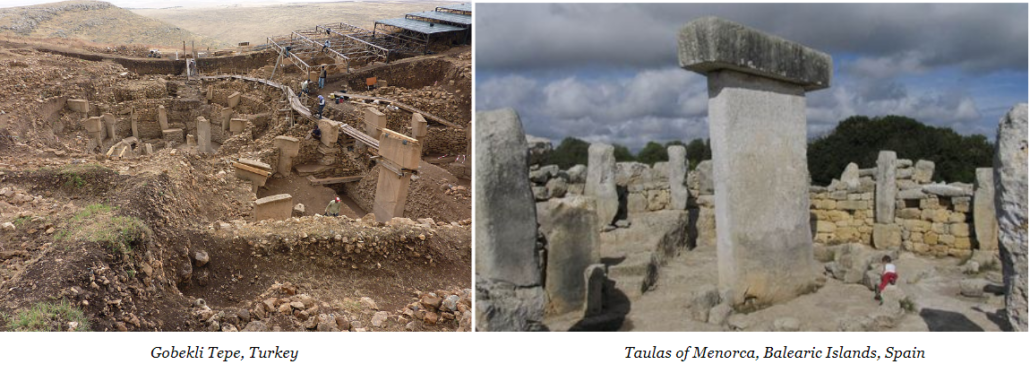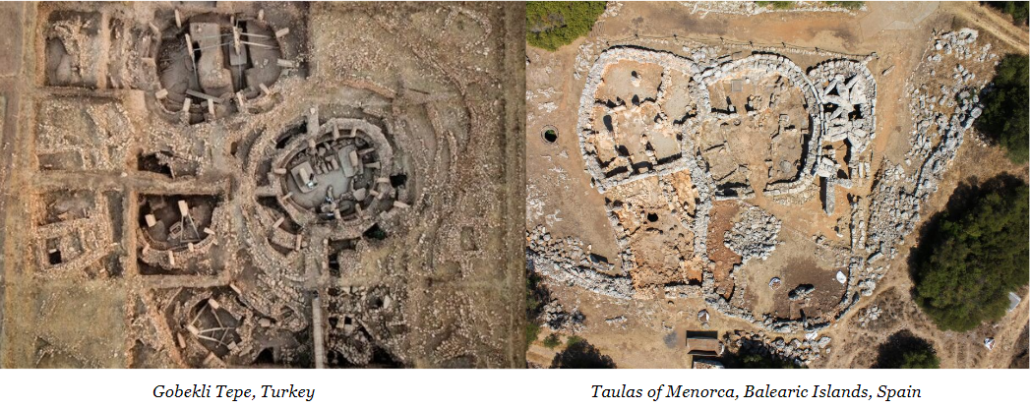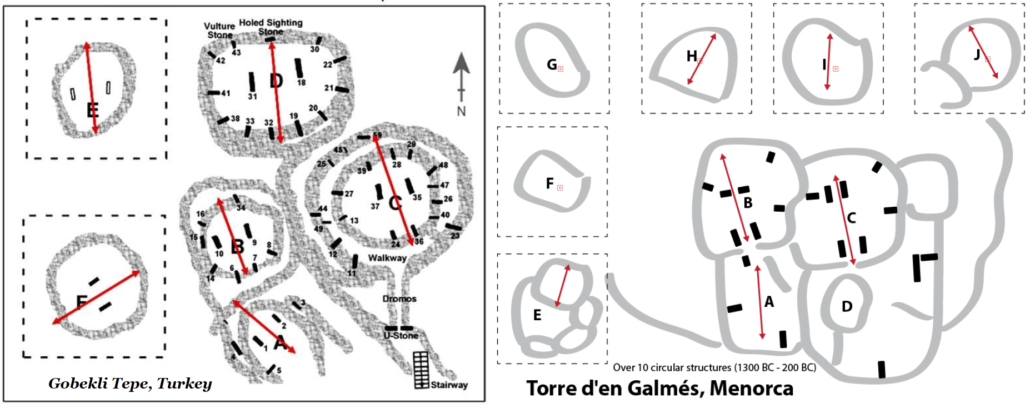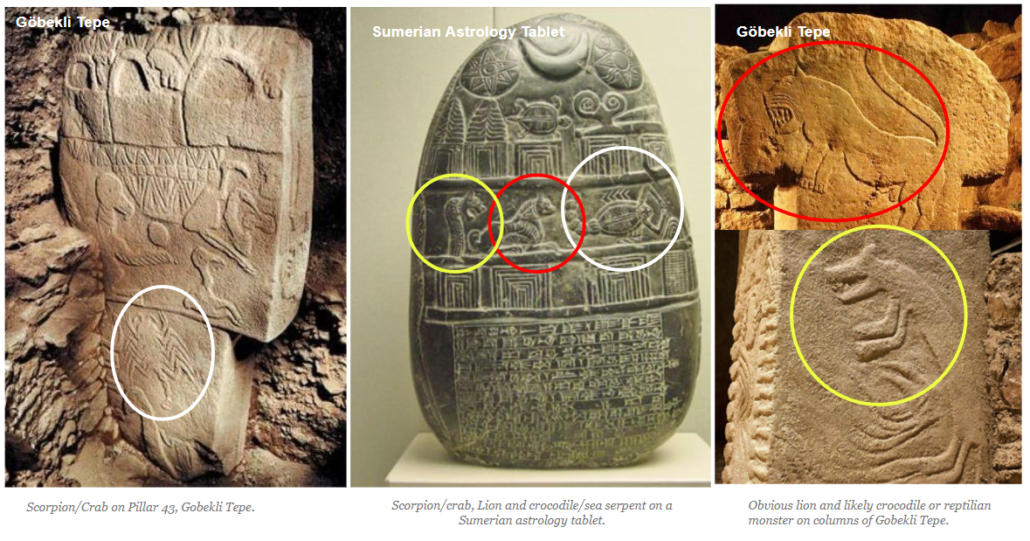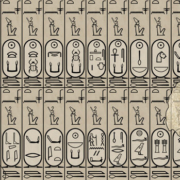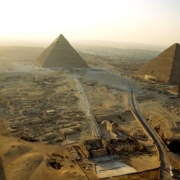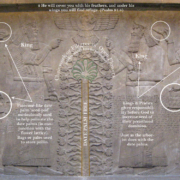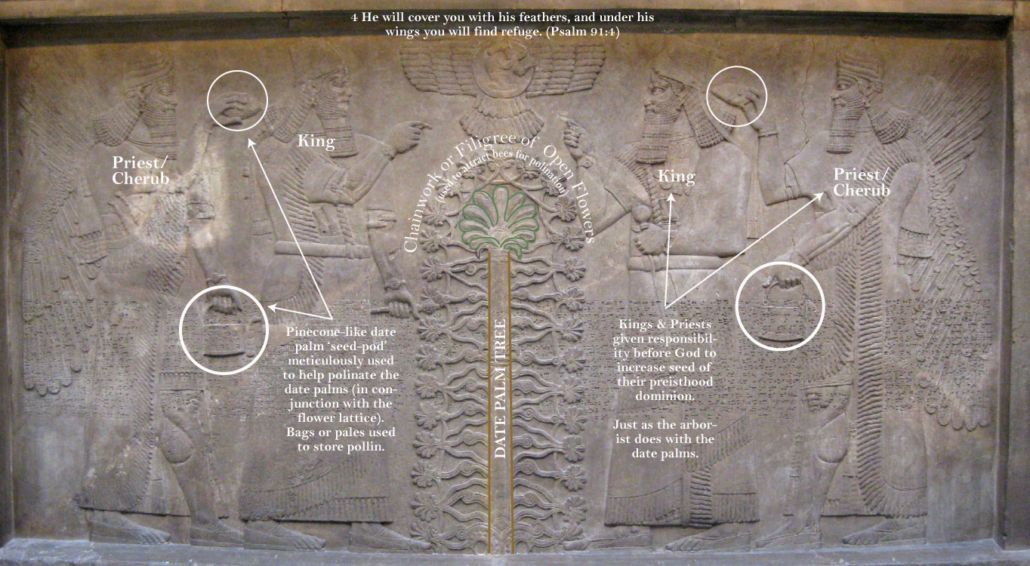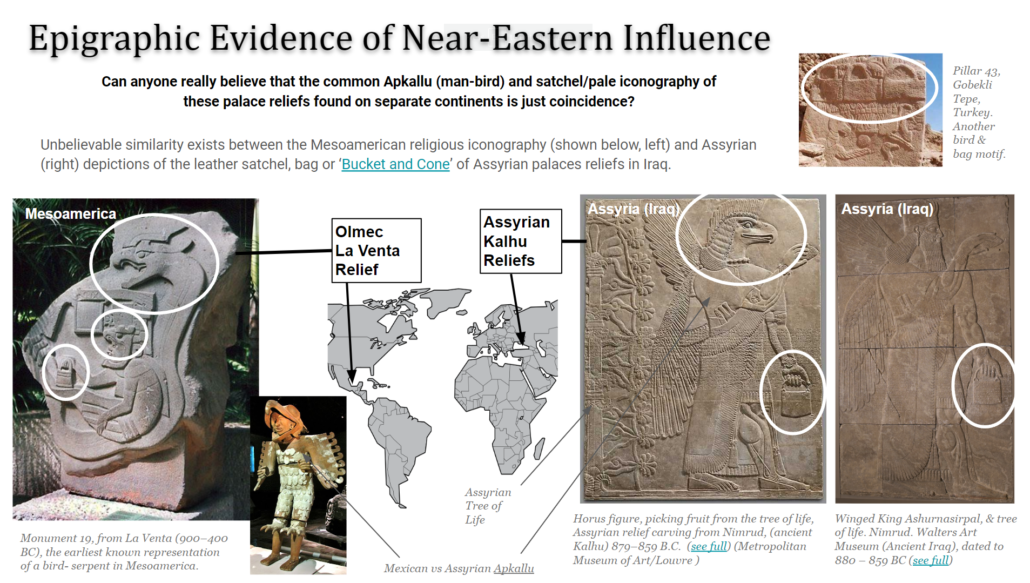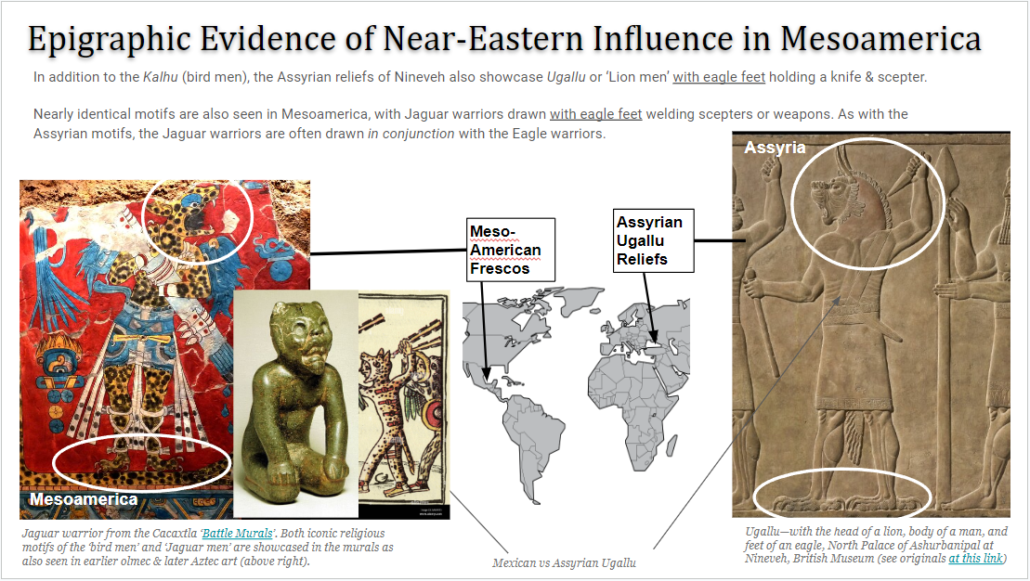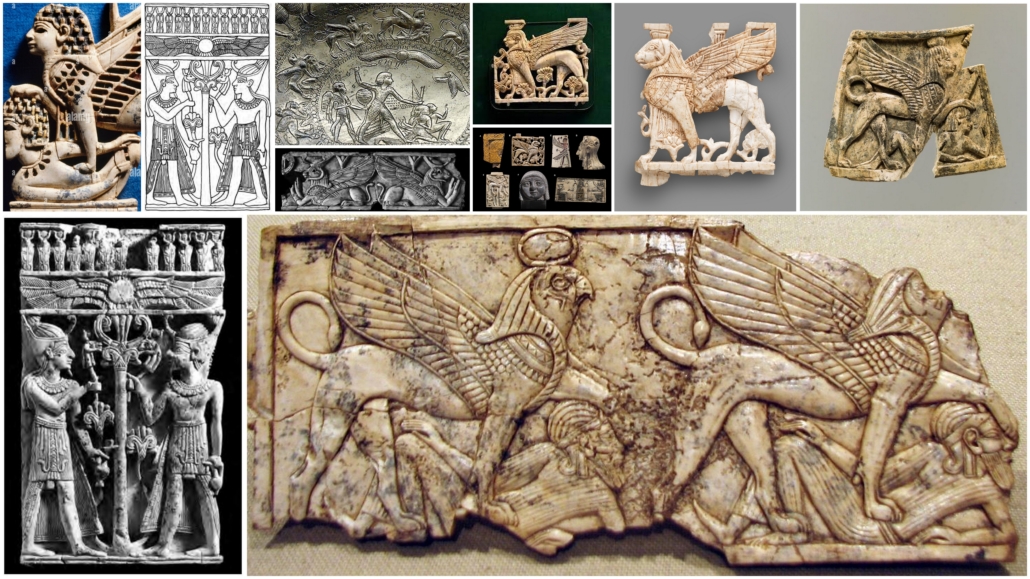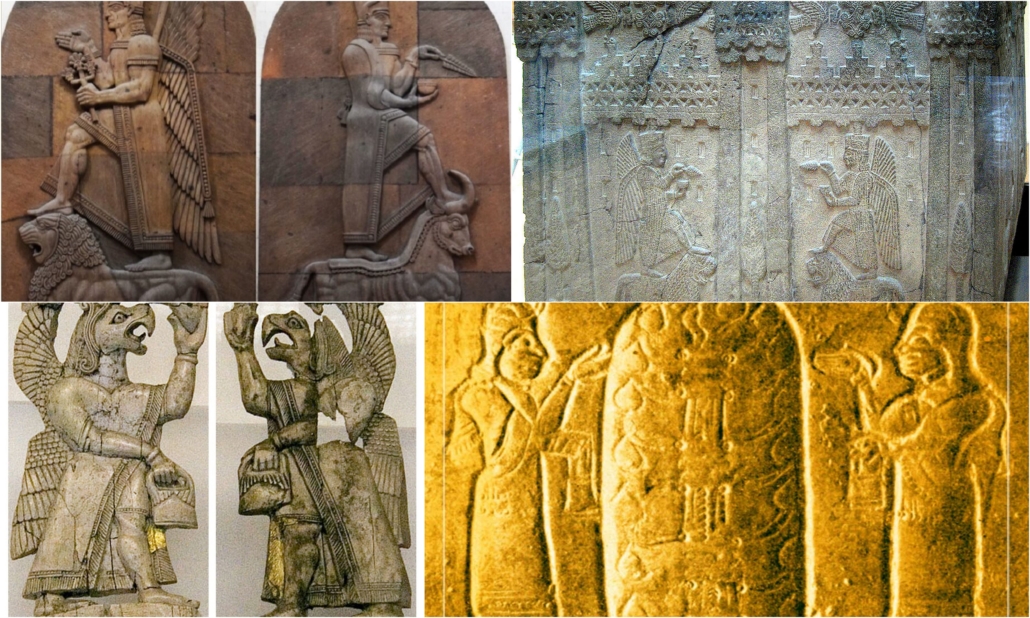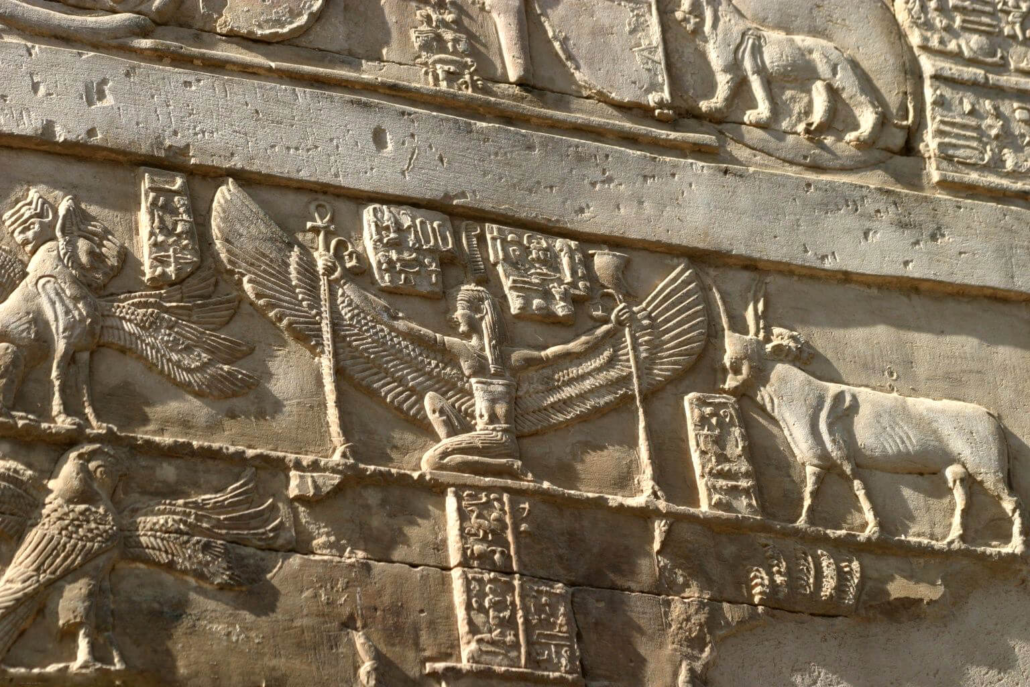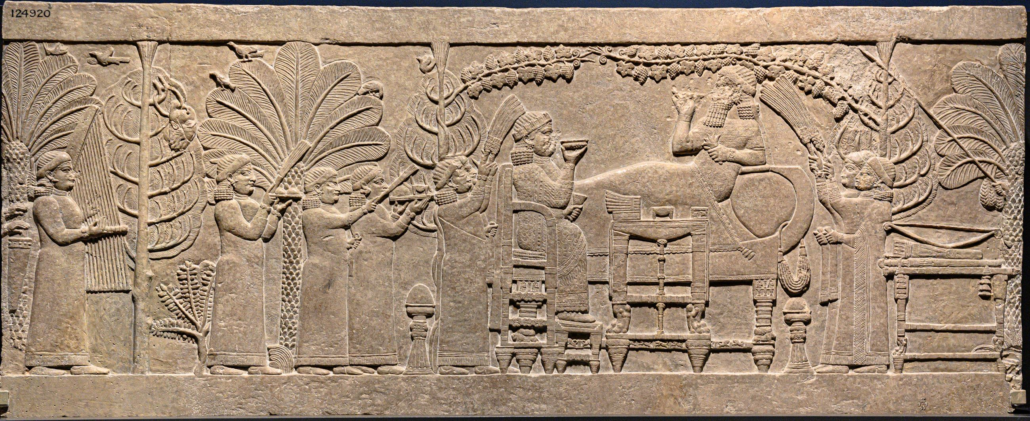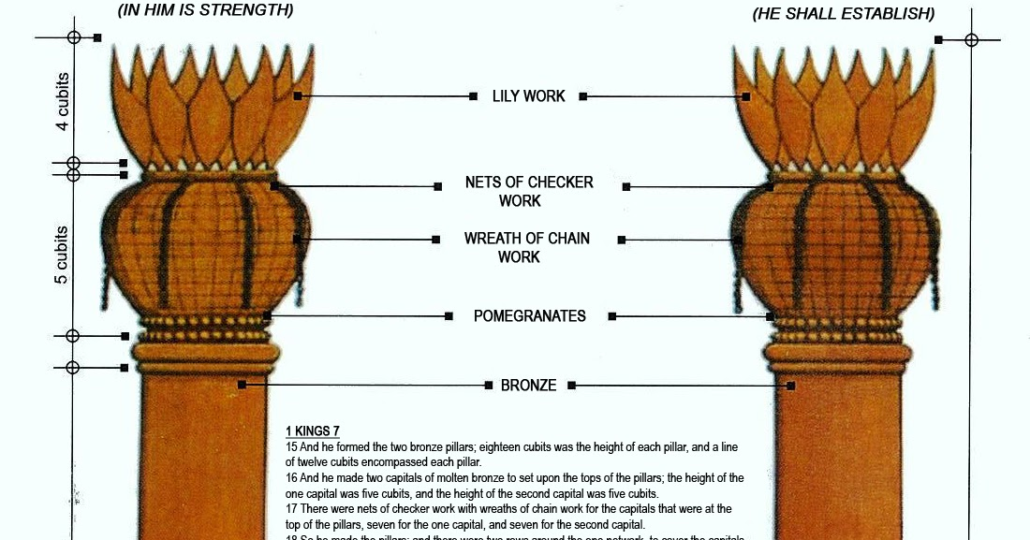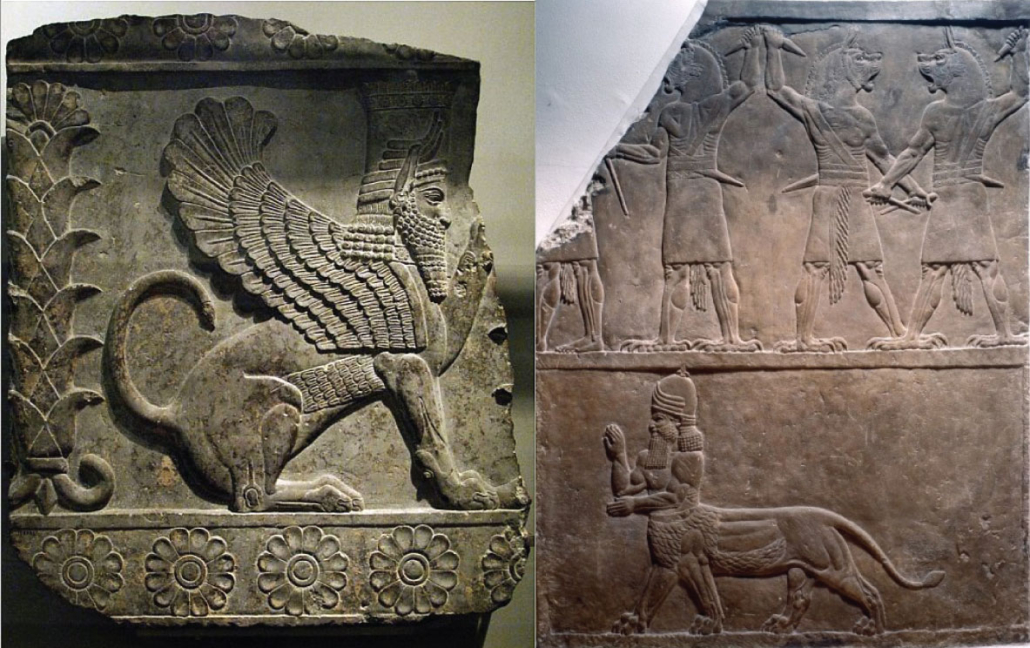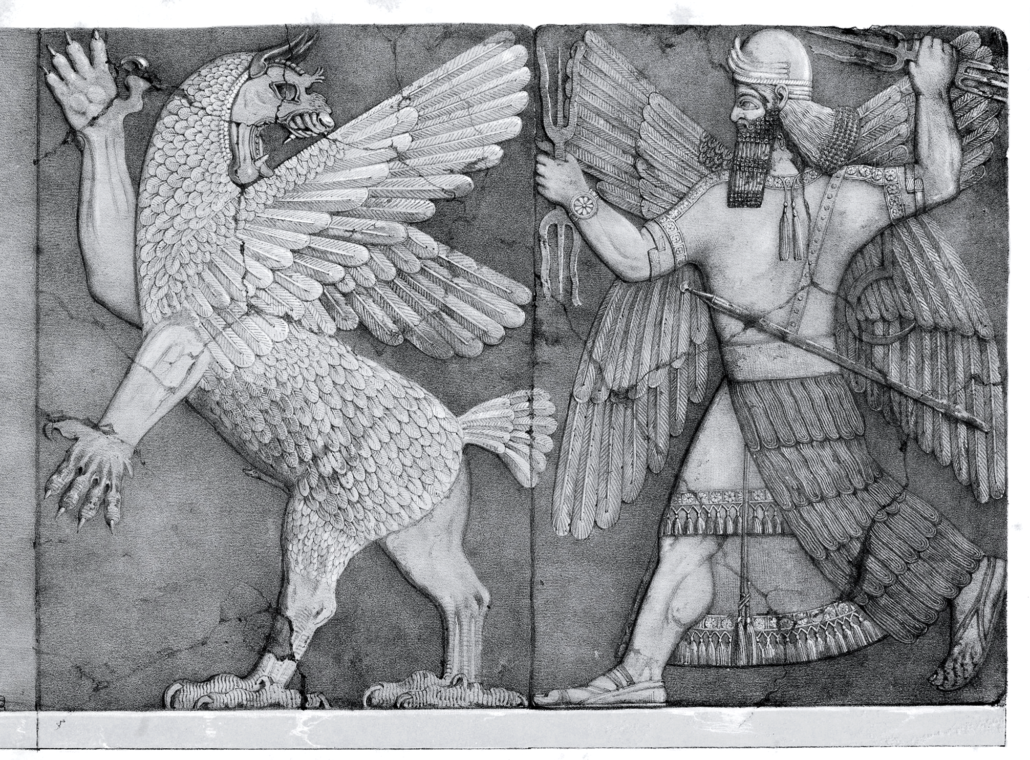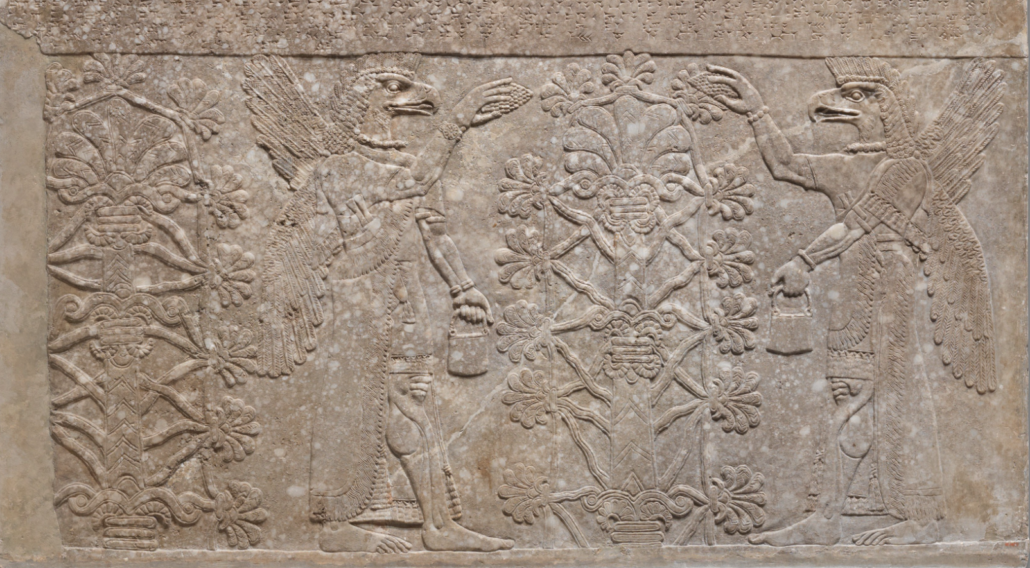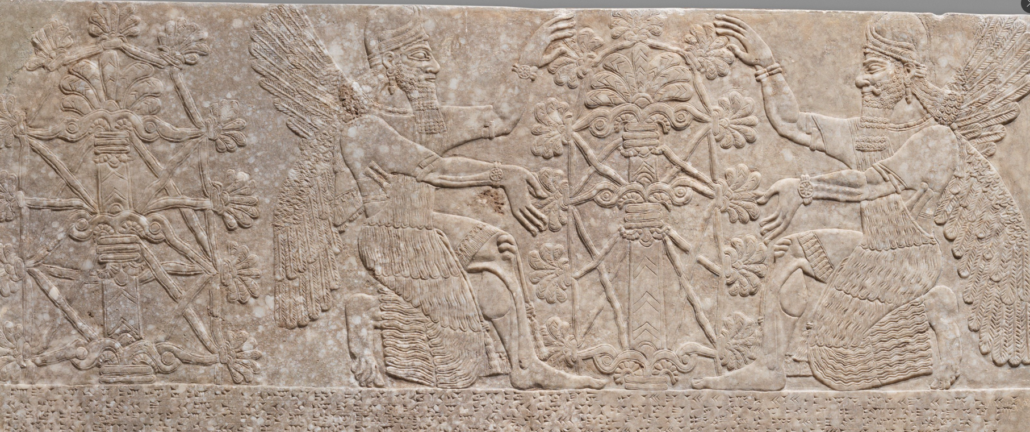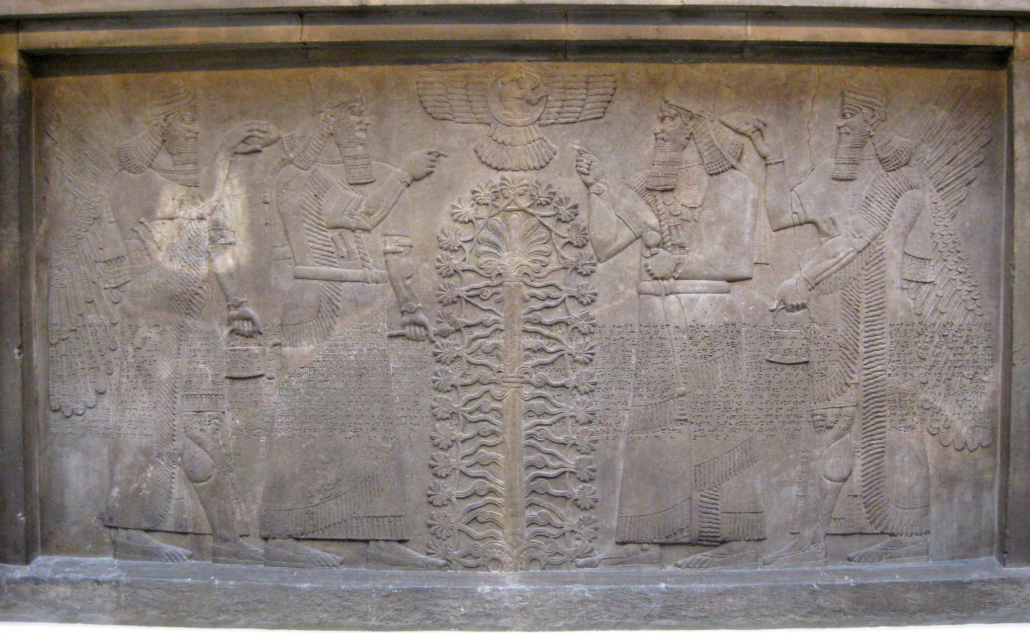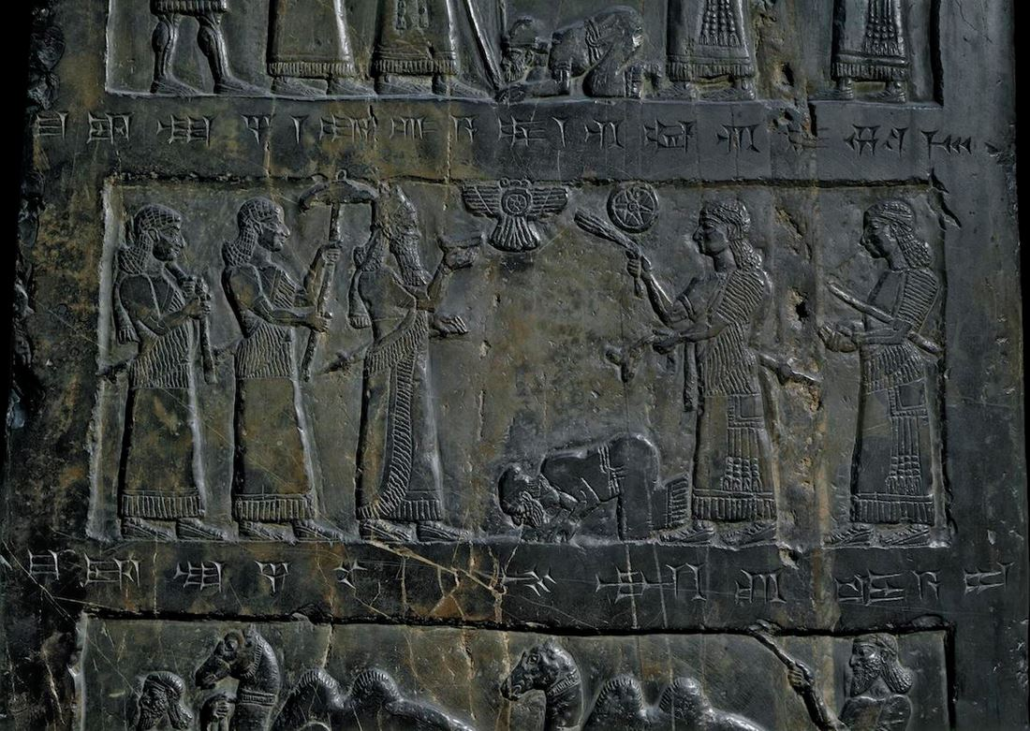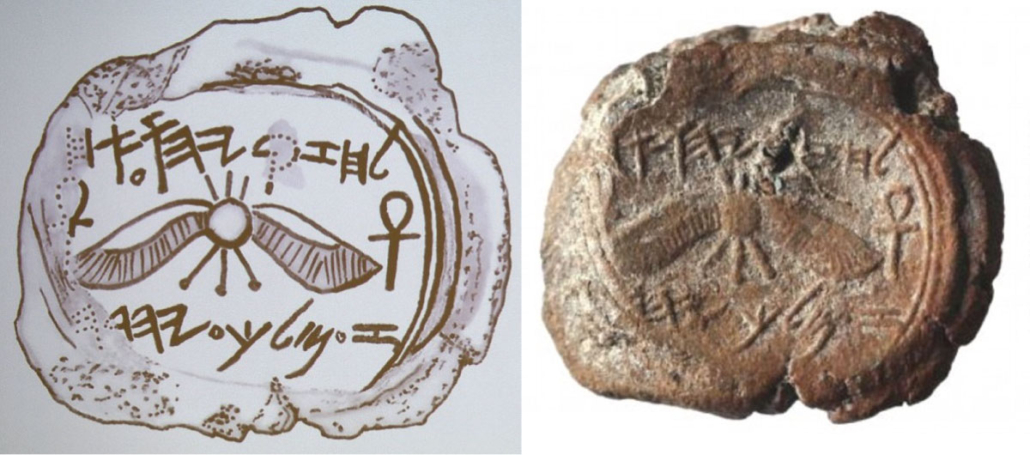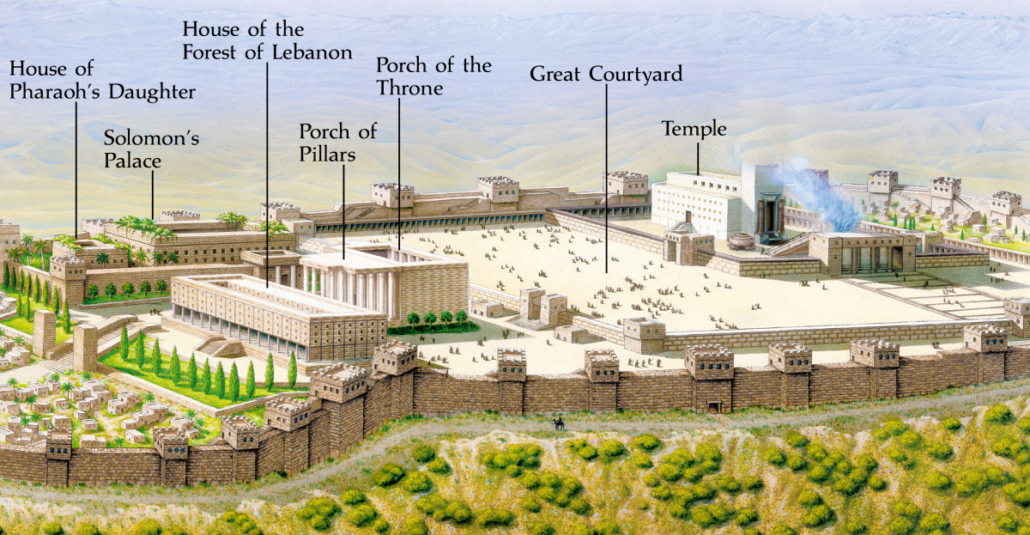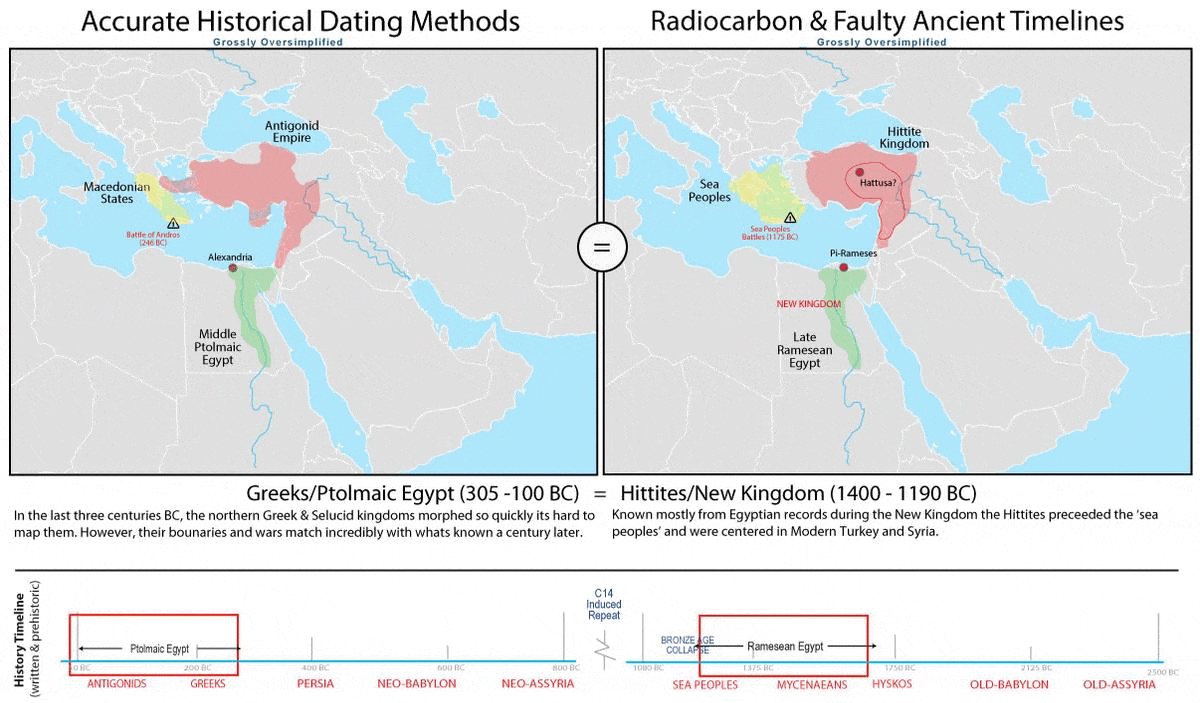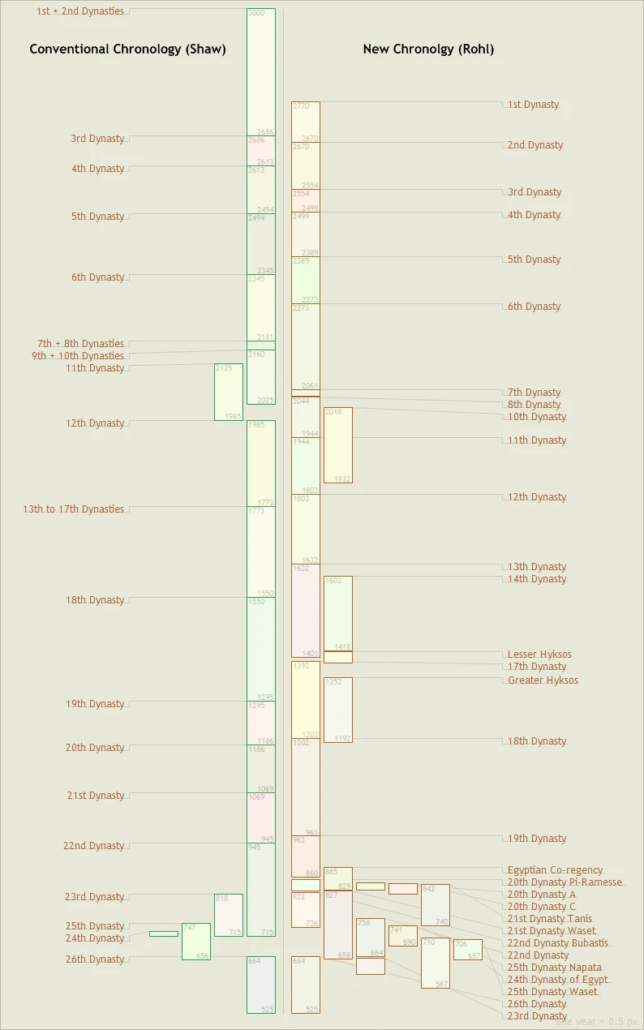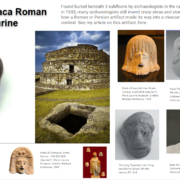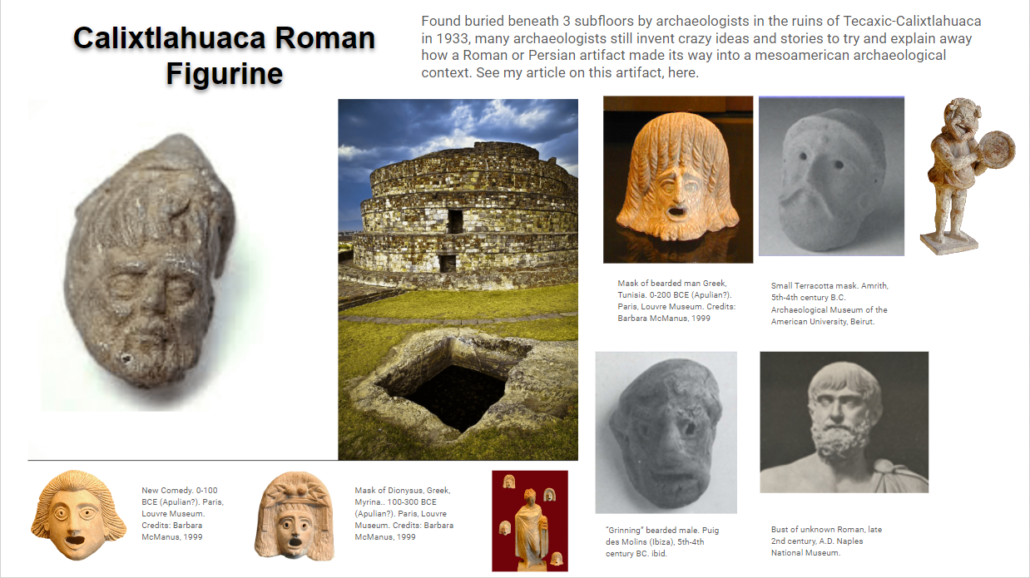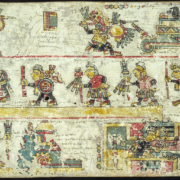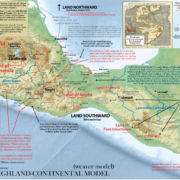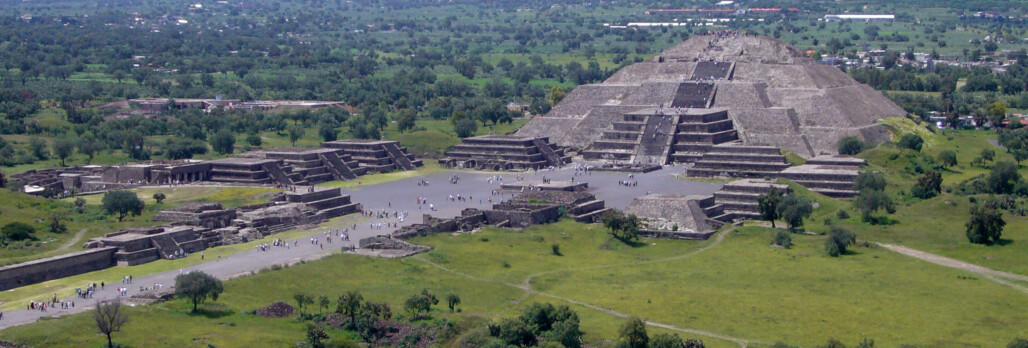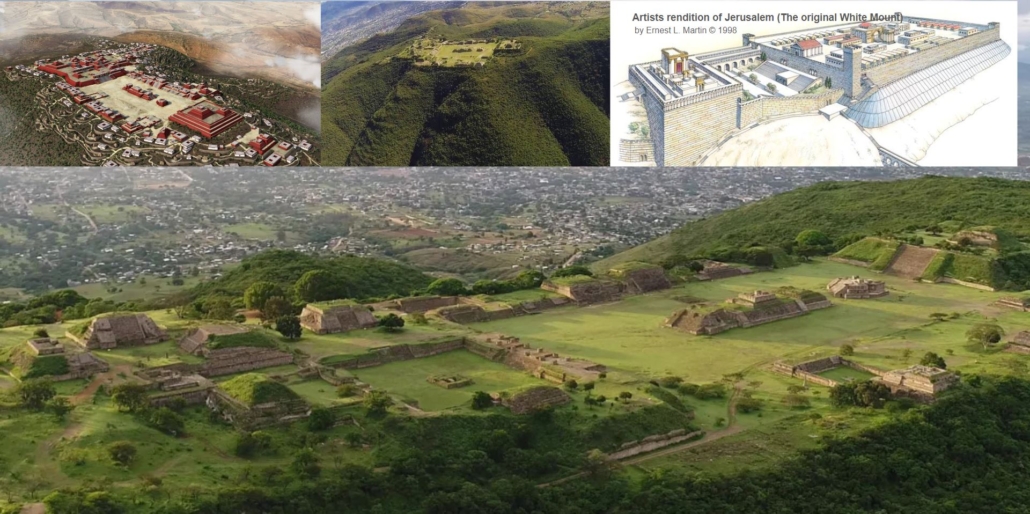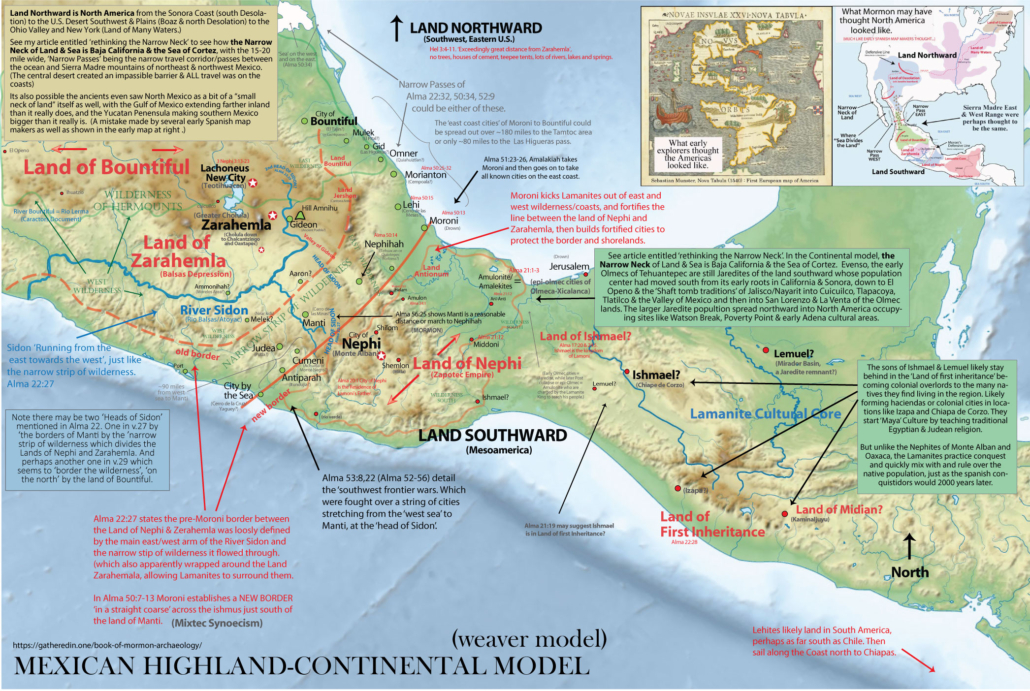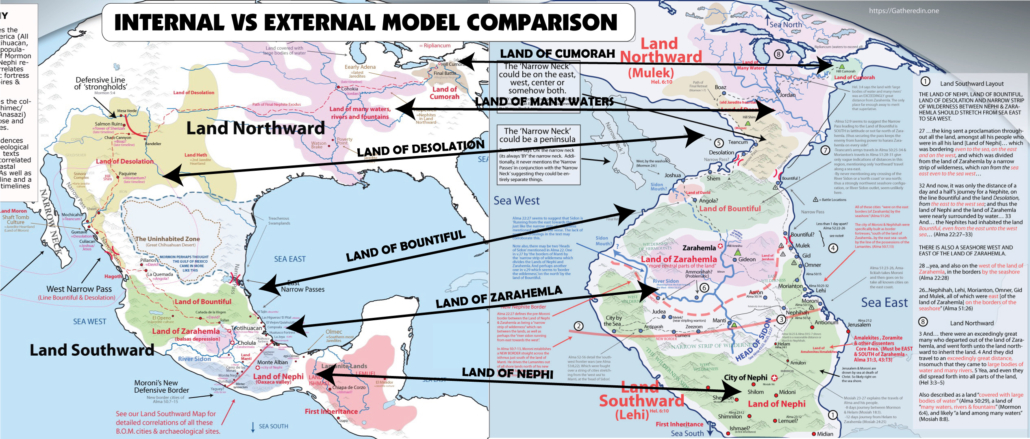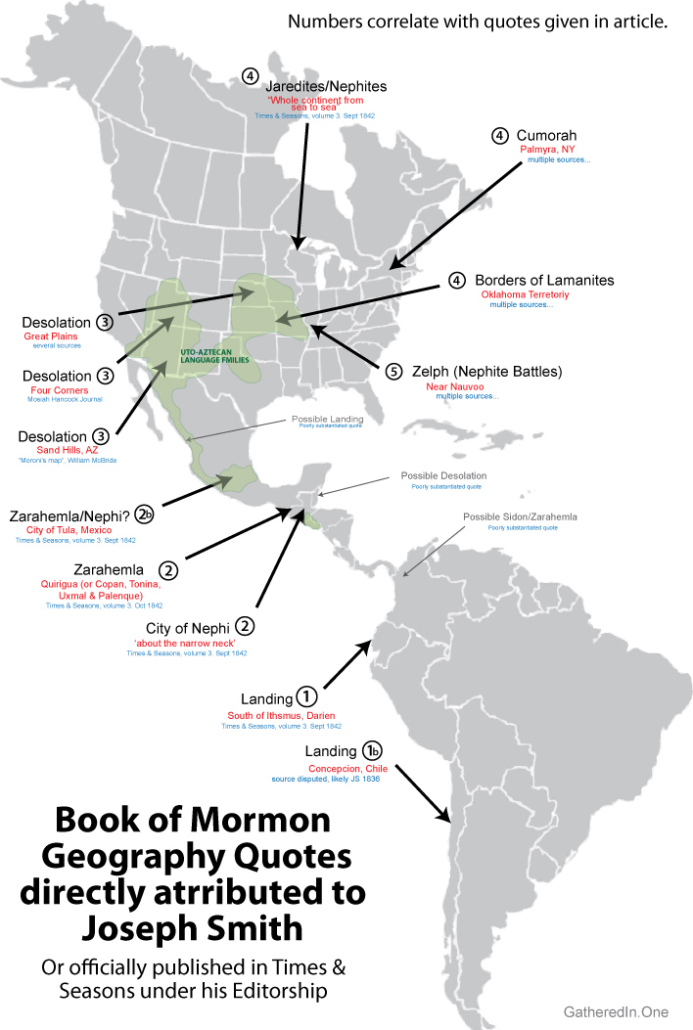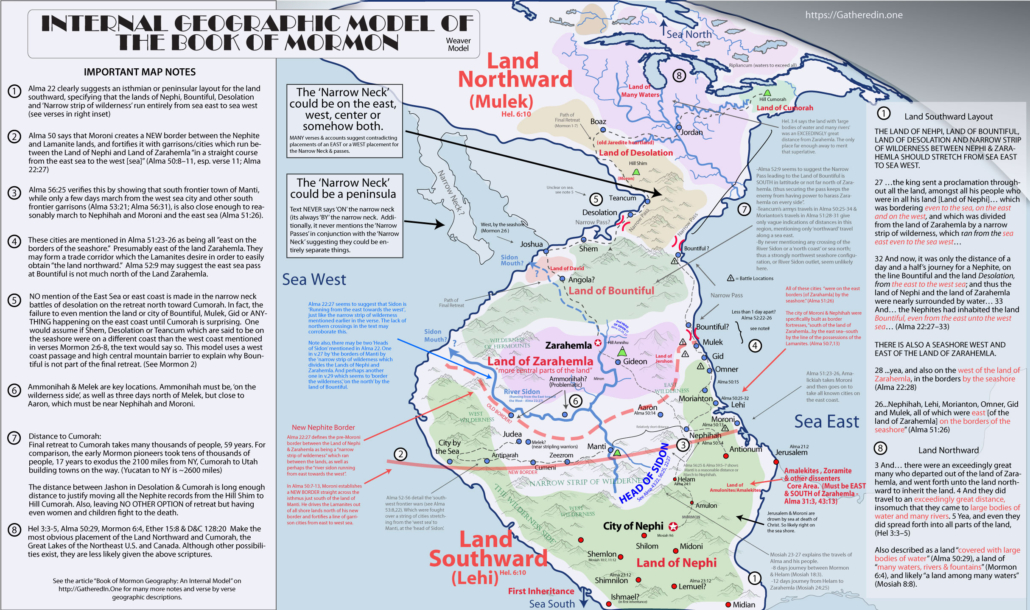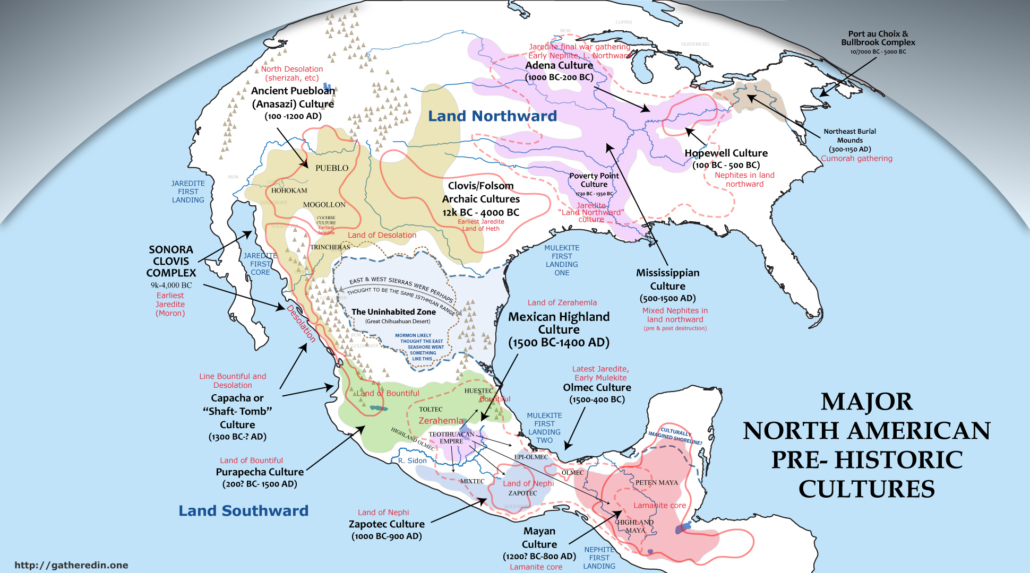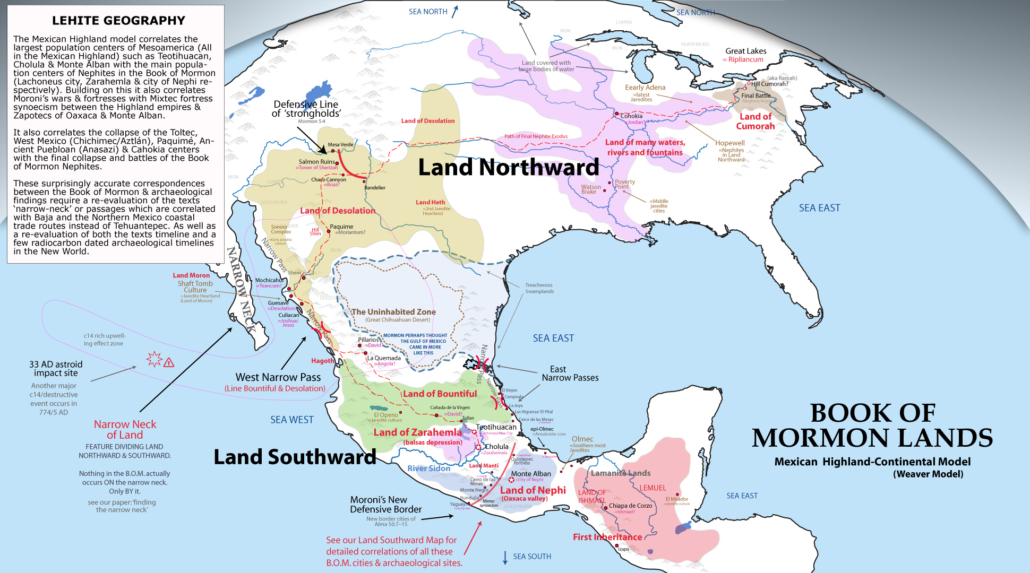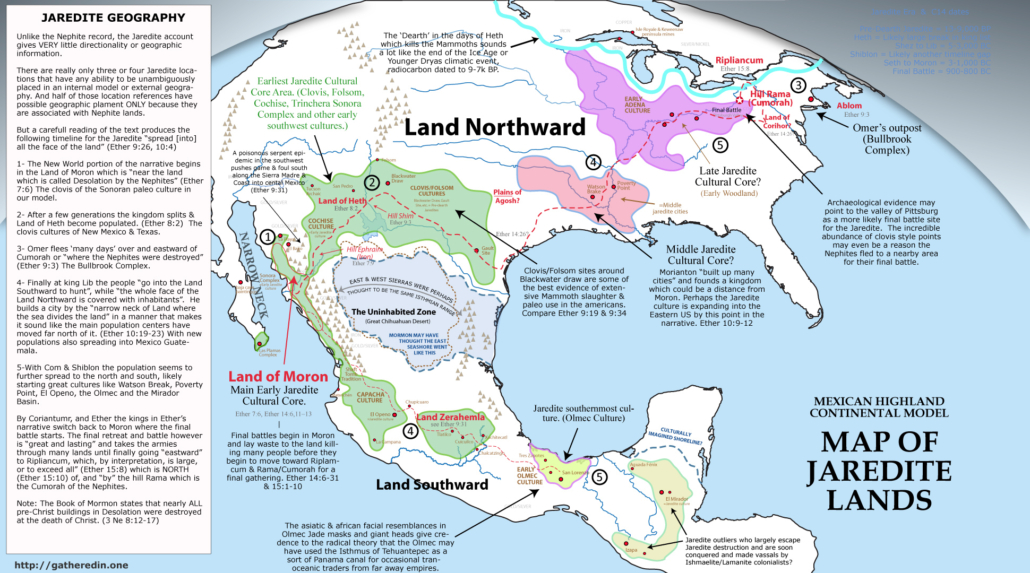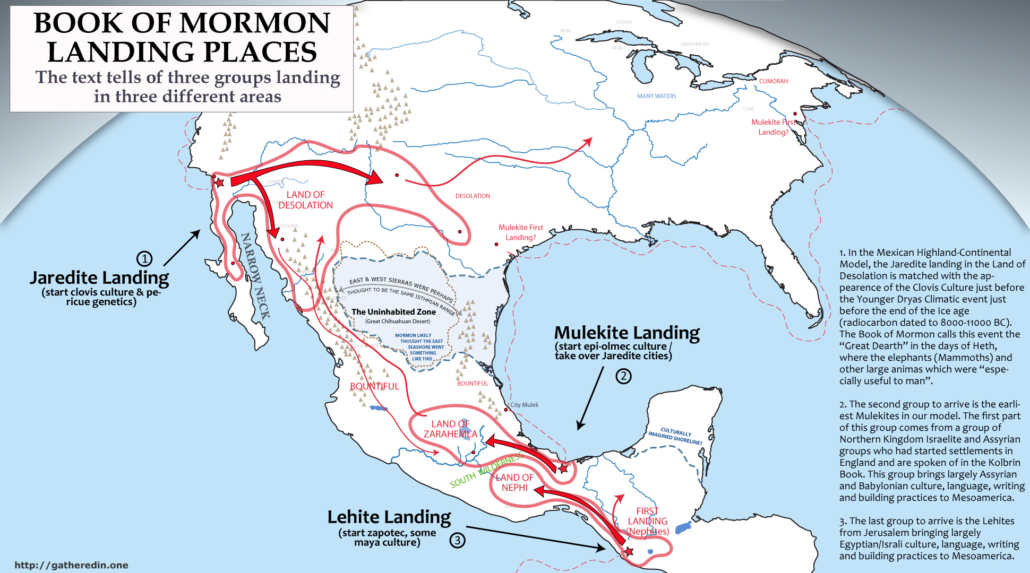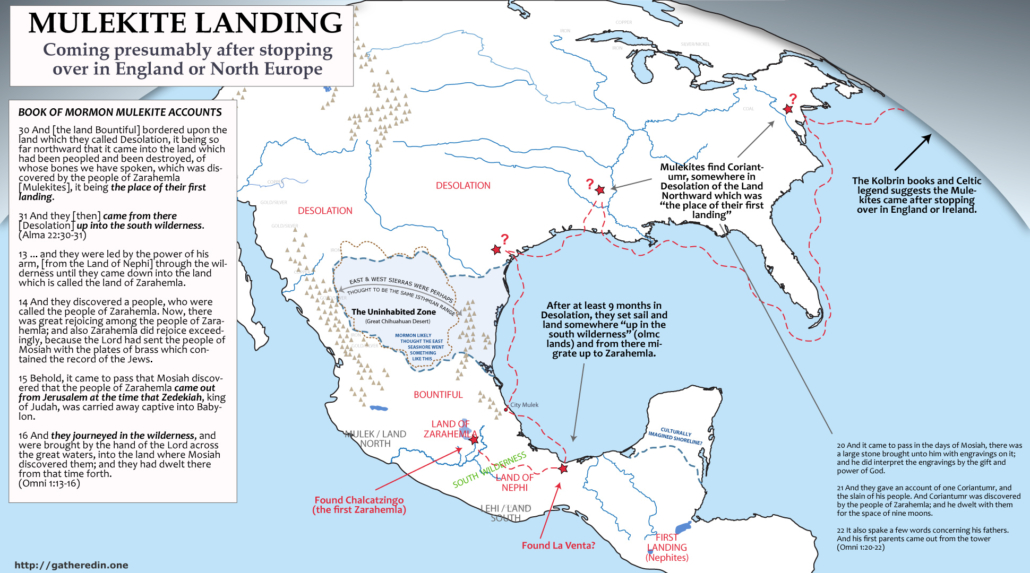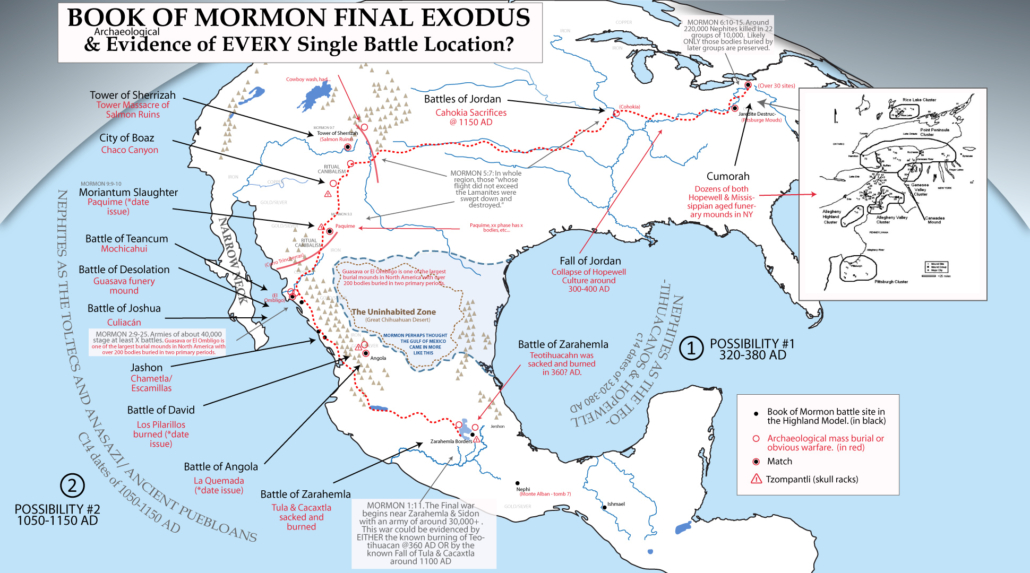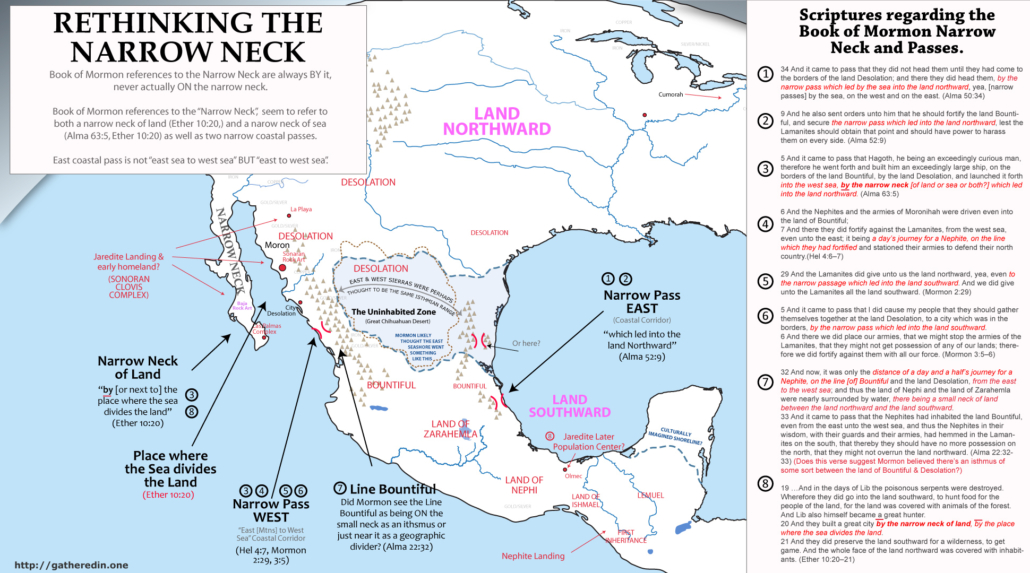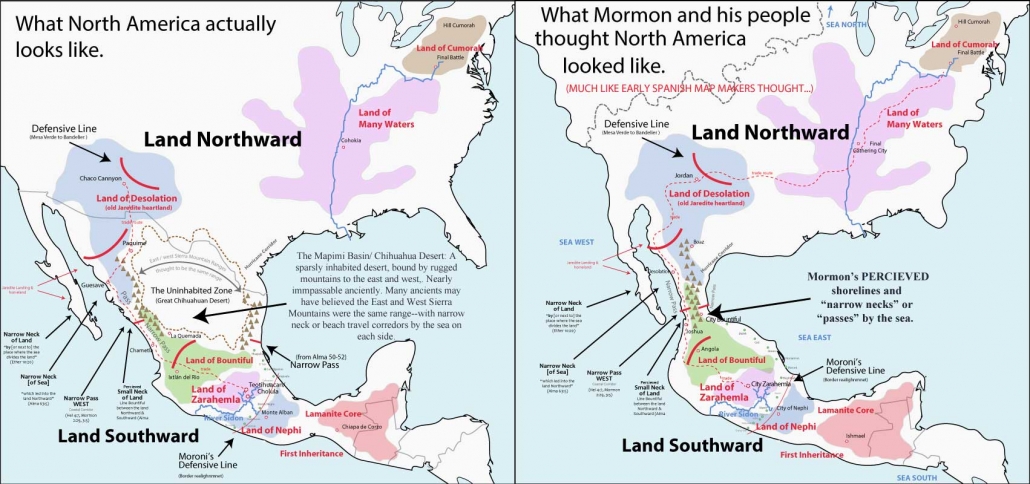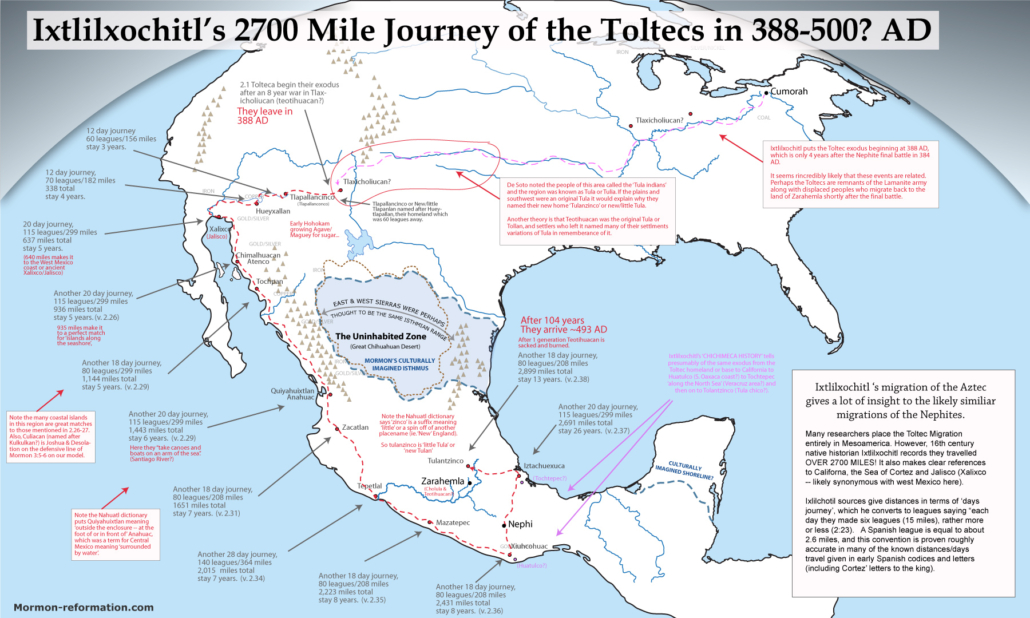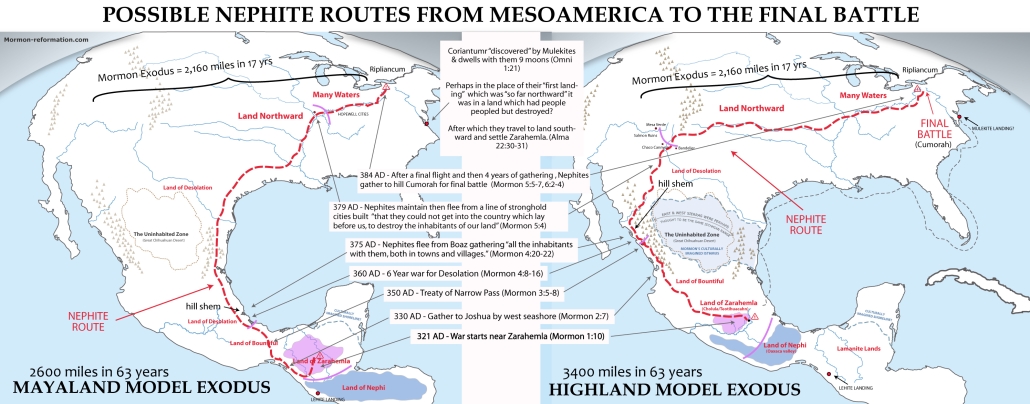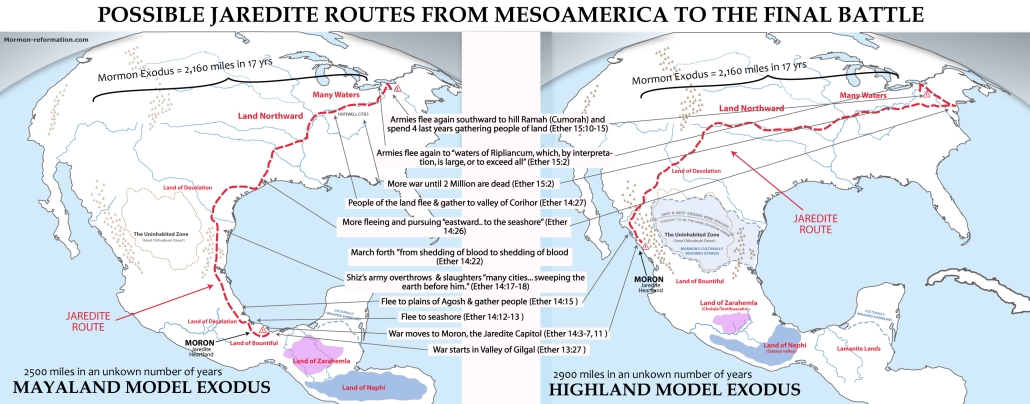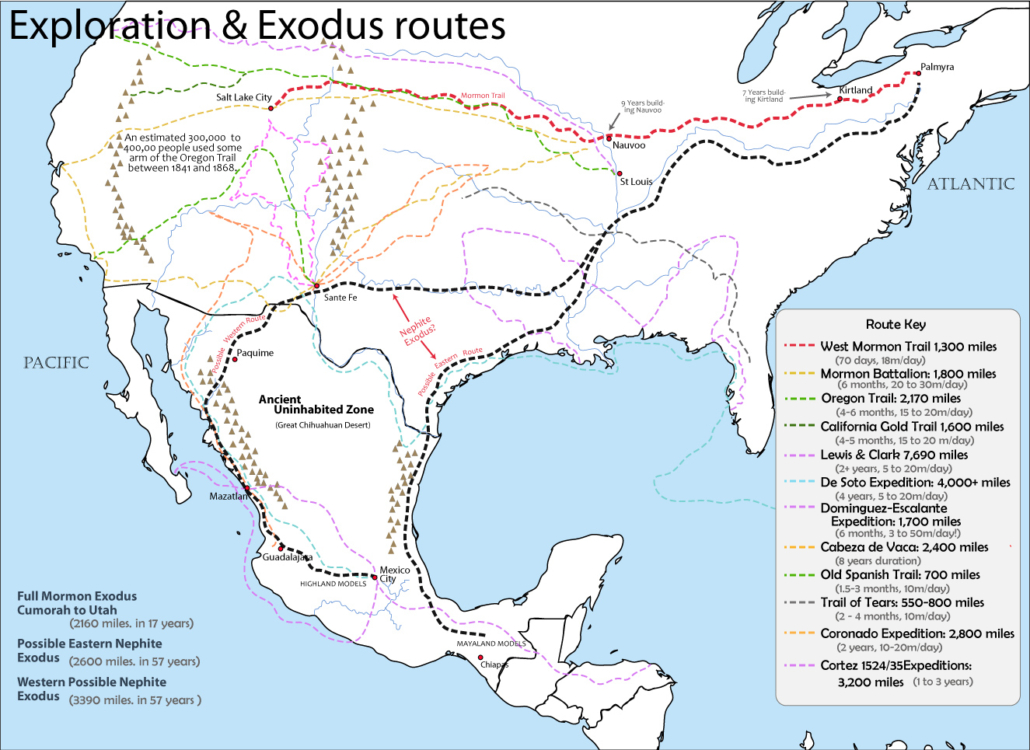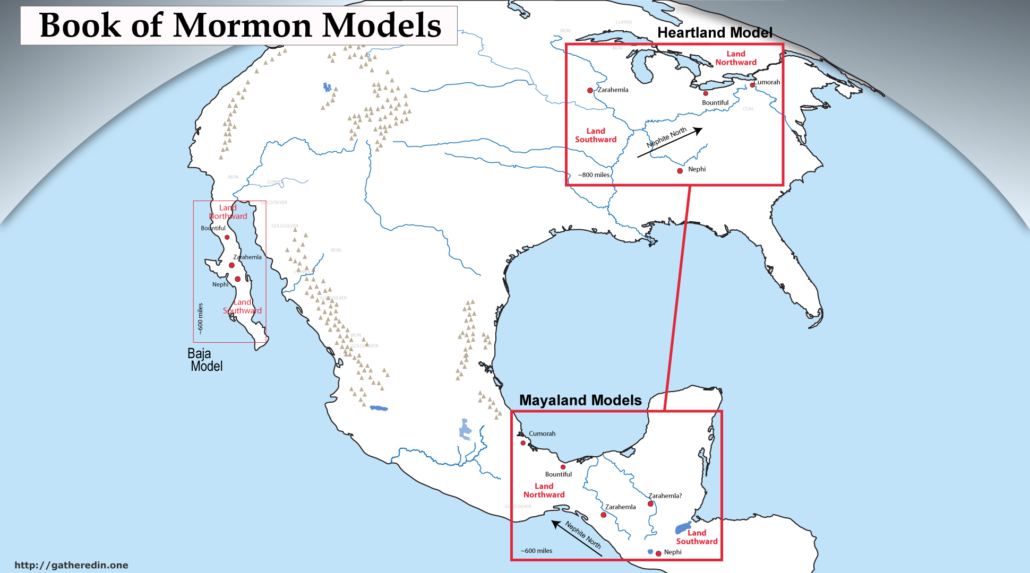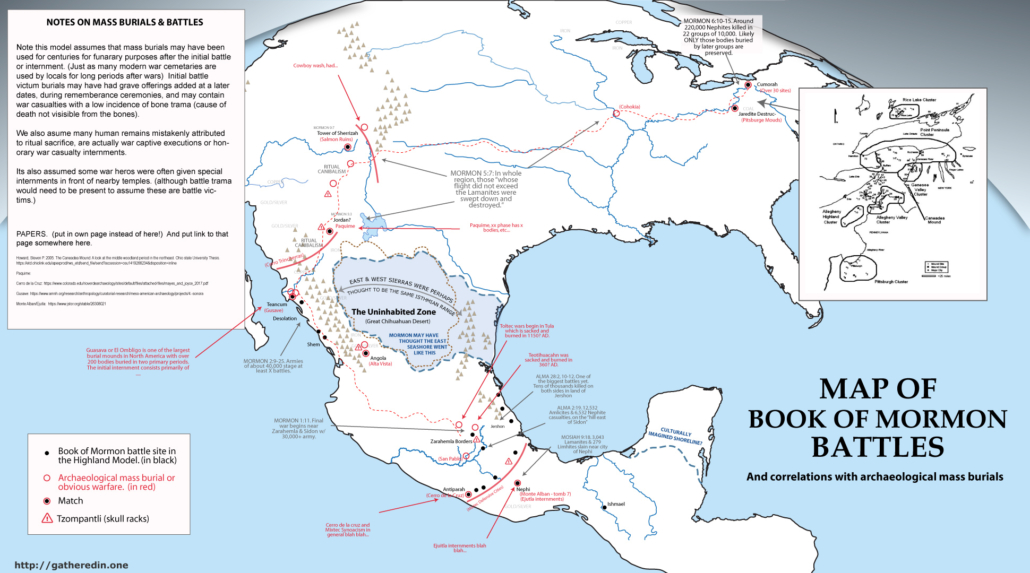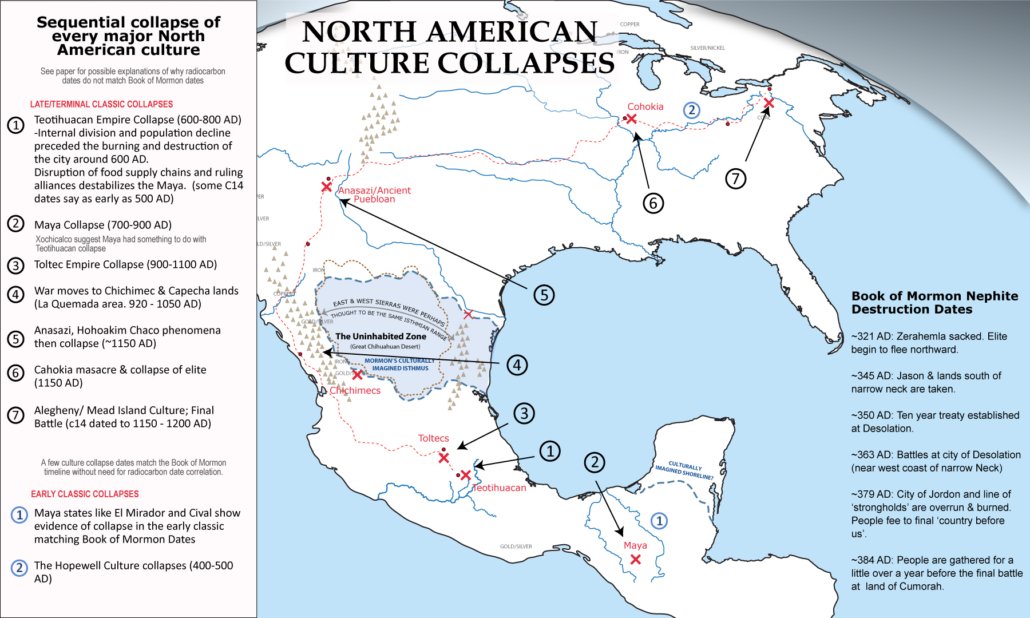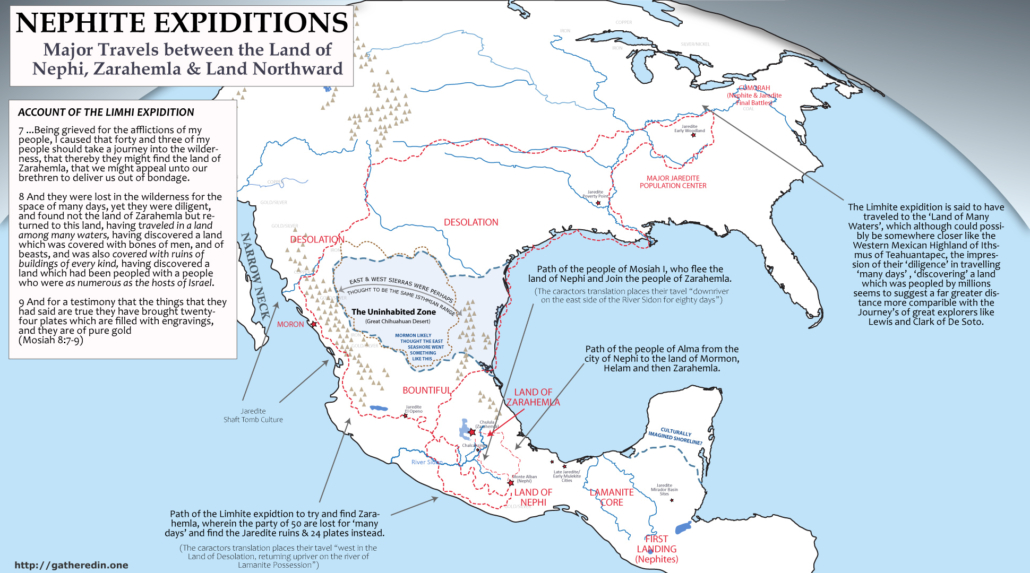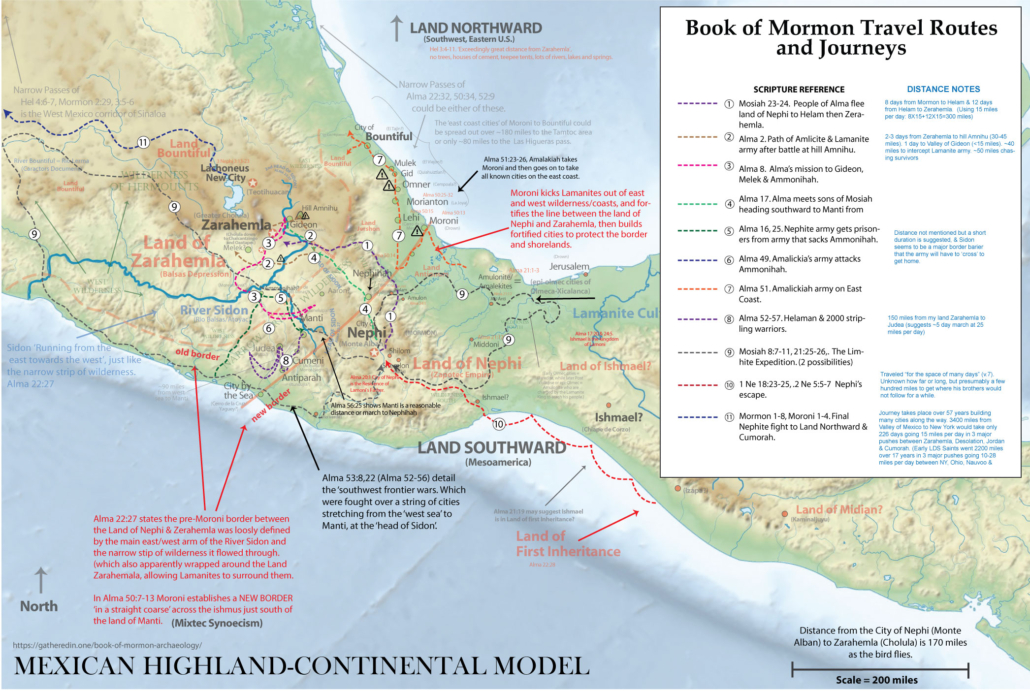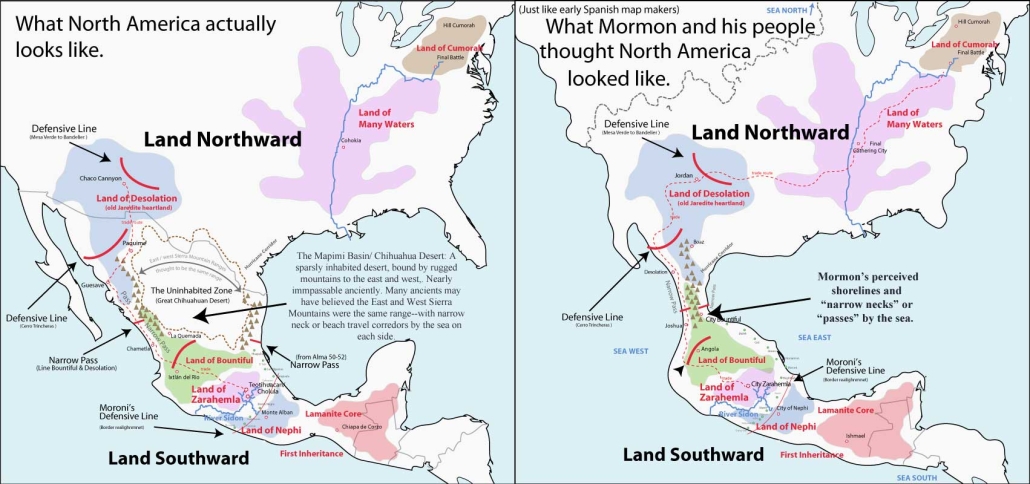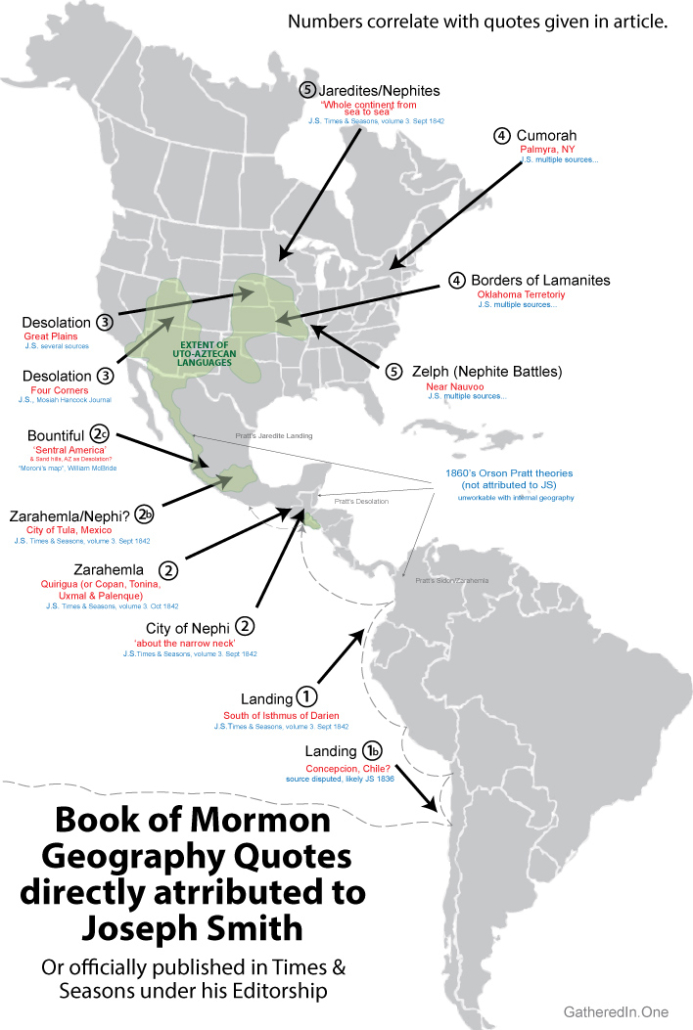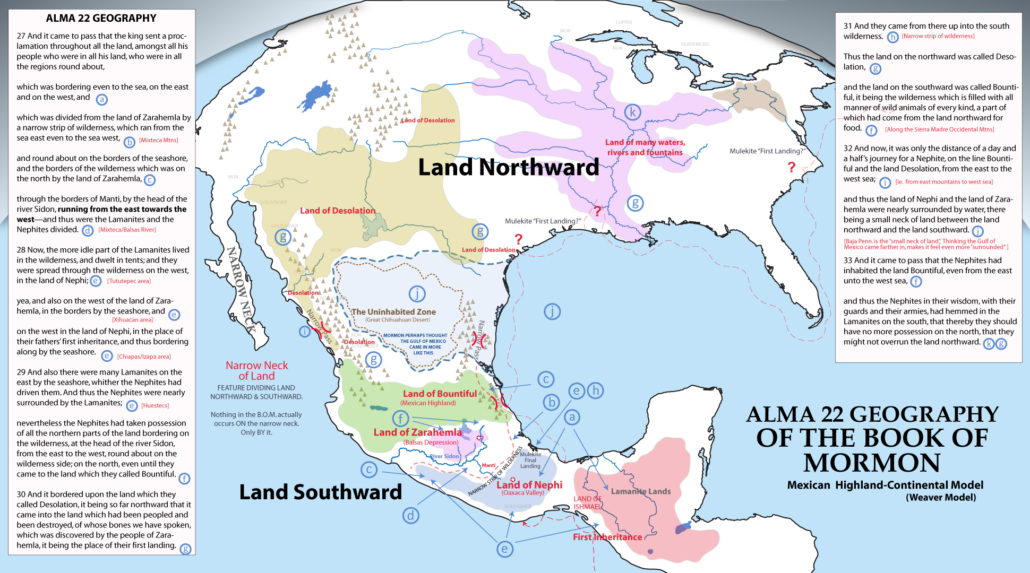Maize was domesticated during the Archaic period, before 4300 BC, but it took a long time to trigger changes commonly associated with agriculture: sedentism and pottery.
The First Agricultural Communities
Use of pottery marks the beginning of the Preclassic at 2500 BC. A later, but important, Preclassic innovation was the prismatic obsidian blade beginning c. 1500 BC.
The first permanent agricultural communities appeared around 1600 BC; small clusters of wattle and daub houses surrounded by gardens, such as at San José Mogote (Oaxaca), where larger structures had specialized communal purposes. Some rare items hint at wealth differences but no large residences or elaborate burials mark social differentiation. Raiding and warfare were present even in early times. Similar communities, such as Chalcatzingo, were simultaneously established in the central Mexican highlands, including the Basin of Mexico. Farming communities did not appear in the tropical Maya lowlands until about 1000 BC; elsewhere in the lowlands, they appeared by about 1600 BC, some large and socially complex.
The ethno-linguistic affiliations of some early Preclassic peoples remain controversial, while others are more clear.
THE OLMECS (EARLY TO MIDDLE PRECLASSIC)
Debate over the dating of Olmec remains occurred until after World War II, when the advent of radiocarbon dating placed the culture between 1200 and 400 BC, predating other civilizations. Olmec influences were widespread during the Middle Preclassic (1000-400 BC) or Early Horizon.
San Lorenzo and La Venta
Archaeologists agree that Olmec polities lay in the Gulf Coast lowlands, such as San Lorenzo (c. 1200-900 BC), where elite residence, ceremonial ponds, and spectacular offerings are found, as well as colossal basalt heads and monuments. Many imports came to the site from across Mesoamerica.
San Lorenzo’s decline c. 1000-900 BC coincided with the rise of La Venta, which contained an earthen pyramid, colossal heads, stelae, and rectangular thrones. Monuments saw frequent renovations, and rituals include deliberate burial of serpentine slabs arranged to depict supernatural beings. Rich infant burials provide early evidence for inherited rank.
Around these centers lie smaller sites, some with earthen structures and carved monuments, clearly the hinterland of San Lorenzo and La Venta. Other Olmec capitals have not yet been well-investigated.
The Olmecs as a “Mother Culture”?
Archaeologists are divided about whether Olmec polities were true states or chiefdoms, and if centers were urban places or chiefly centers. Fueling this controversy is disagreement about the nature and implications of “Olmec” art and symbolism. Some manifestations (i.e. colossal stone heads) are confined to the Gulf Coast. Others are scattered throughout Mesoamerica. Some believe the Olmecs were the “Mother Culture” of later Mesoamerican civilization. Others argue that they were one of many societies that independently evolved complex institutions while trading goods and symbols.
Either way, Olmec sites display core Mesoamerican cultural traditions, large centers with monumental architecture and sculpture, and the ball game, by the end of the Middle Preclassic, c. 400 BC.
Warfare was also present. Olmec monuments show weapons and militaristic scenes, and a burial at El Portón (Guatemala), c. 500 BC, included trophy heads and sacrificial victims.
West Mexican Polities
In western Mexico between about 1500 BC and 400 AD, distinctive hierarchically organized societies using vertical shaft tombs emerged in Colima, Nayarit, and Jalisco. Most sites lack monumental buildings, monuments, and calendrical signs, but had possible contact with South America, on the basis of metallurgy and ceramic forms.
Mortuary goods include complex models of houses, rituals, ball games, musical performances, and people being carried in litters, perhaps indicating elite rivalry. By the beginning of the Late Preclassic, tombs were deemphasized and architectural complexes with concentric circular layouts were constructed, called the Teuchitlan cultural tradition, lasting until AD 600-900.
LATE PRECLASSIC MESOAMERICA
The Late Preclassic period (400 BC-AD 250) saw the first florescence of the Lowland Maya, signaled by ubiquitous red-slipped Chicanel pottery. Population in the Basin of Mexico more than doubled; large polities with impressive centers became common. Monte Albán in Oaxaca and Teotihuacán in the Basin of Mexico were the earliest true cities.
Calendars and Writing
Olmec objects display signs that anticipate mathematical or written symbols; calendrical glyphs appear slightly later. The Long Count originated in the Late Preclassic; the earliest use, at Tres Zapotes, corresponds to 31 BC. The 260-day ritual and the 365-day solar calendars are older; an example of the former at San José Mogote may date before c. 600-500 BC; bar and dot numerals at Monte Albán may date to 500-400 BC. The solar calendar probably also dates to the Epi-Olmec.
Writing originated more than once in Mesoamerica, associated with the Nahua, Maya, Mixe-Zoque, Mixtec, and Zapotec languages. Mesoamerican writing can be difficult to understand, as some glyphs are pictographs, others whole words or syllables.
Glyphs were carved or painted on stone monuments and buildings, and appear on ceramics, jewelry, bones, and shell objects and probably on long-disintegrated wood and cloth. Long texts were painted in accordion-fold books called codices. Surviving codices are late, so other inscriptions are used to trace writing’s origins.
Kings, Courts, and Cities
Writing, calendars, and monumental art are strongly related to Late Preclassic kingship and the Classic period emergence of urban centers and territorial states. The Maya lowlands provide carved monuments with royal portraits and dated inscriptions such as the early Hauberg Stela (AD 197), on which king Bone Rabbit is associated with the rain god, autosacrifice, agricultural fertility, world renewal, and human sacrifice, all important in later Maya rule and warfare. Such monuments increase after AD 250, marking the transition to the Classic period.
Classic Maya monuments frequently include accounts of past royal events, names, and titles. Combined with archaeological evidence, royal genealogies and origins, such as Tikal’s, can be understood.
Much about early kingship can be traced through “royal” burials; more is revealed at Nakbé (c. 400-200 BC) and El Mirador (200 BC – AD 150), where astonishing levels of construction occurred and carvings show gorgeously attired figures, accompanied by glyphs at El Mirador by around 200 BC. The smaller, contemporary centers of Lamanai and Cerros (Belize) are probably also seats of early kings: temple sculpture and inscriptions anticipate later royal iconography. The scale and complexity of these sites suggests centralization and labor organization.
Warfare and conflict extend far back in time. Defensive walls appear at El Mirador, and Late Preclassic fortifications lie at Becán (Campeche). There is osteological evidence for the ritual sacrifice of war captives featured in Classic Maya art, and trophy heads and severed bodies are portrayed on the Hauberg Stela. Mass sacrifices are found at Cuello (Belize).
The origins of lowland Maya kingship might be seen at Epi-Olmec Kaminaljuyu (Guatemala), where Late Preclassic burials contain costly offerings and sacrificial victims.
Monte Albán. San José Mogote was largely abandoned by around 500 BC. Some of its buildings were burned, perhaps by enemies from nearby polities. Newly built defensive systems appear simultaneously in the southern valley. Such competition stimulated the sudden founding c. 500 BC of the Zapotec city of Monte Albán on a previously uninhabited mesa in the central valley; among its first monuments was the Danzante warrior frieze. By 200 BC its hillsides housed over 17,000 people, while the summit contained complex elite residences and carved, dated stelae. Smaller settlements clustered nearby; more distant sites were fortified.
Between 200 BC and AD 100 the mesa was leveled and a ball court, 20 temples, palace-like residences, and elite chamber-tombs were built; 41,000 people occupied 518 settlements with several size-levels, a pattern often associated with territorial states. Impressive outlying communities were administrative centers under Monte Albán’s control.
Monte Albán controlled distant areas as well. Over 40 “conquest slabs” associated with Building J in the great plaza are carved with place glyphs, perhaps distant conquered polities. A state was clearly present by the late Preclassic.
Teotihuacán. The Basin of Mexico contained an extensive lake system and fertile soils. Farmers colonized the high, cold region at about 1600 BC. About 10,000 people in small communities lived there by around 1200 BC. At the end of the Early “Olmec” Horizon c. 400 BC, 80,000 people lived in five or six large polities whose capitals contained mounds, such as Cuicuilco, with its distinctive circular pyramid, in the moist southwestern Basin. Few lived in the drier northeastern Teotihuacán Valley, but between 300 and 100 BC it was heavily colonized, and Teotihuacán emerged as a huge urban center with 20,000 to 40,000 people. A century later 60,000 people lived there. Volcanic eruptions had destroyed the southern and eastern Basin and Cuicuilco; displaced people may have migrated to Teotihuacán. Two major obsidian deposits lay in or near Teotihuacán, including widely traded Pachuca obsidian.
Teotihuacán was the largest city in the New World, construction started early in the 1st millennium AD and continued for 350 years, including the pyramids of the Sun and Moon. In contrast to Oaxaca, few settlements lay outside the city. The city depended on a huge irrigation system fed by springs and seasonal streams within a day’s walk. The much-later Aztecs regarded the city as sacred.
THE CLASSIC PERIOD: TEOTIHUACáN AND ITS NEIGHBORS
During its initial Early Classic rise, Teotihuacán governed a region of about 25,000 sq. km (9653 sq. miles) with roughly 500,000-750,000 inhabitants. But between the 4th and 6th century AD the city’s influence reached far beyond central Mexico. Archaeologists call this the Middle Horizon, which coincides with Teotihuacán’s mature urban phase. With a population of 125,000, many apartment compounds display economic specialization, such as manufacture of obsidian objects, ceramics, grinding stones, shell objects, jewelry, and probably materials that left no traces. These may have been traded in the Great Compound, the city’s principle market.
Sherds of Maya Chicanel pottery appear in the city, and people from western Mexico, the Gulf Coast, and the Valley of Oaxaca visited and lived in special residential enclaves in the city. Some were artisans, others merchants. The so-called Merchants Barrio has the highest concentration of foreign pottery, and round storehouse buildings. Murals at the Tetitla compound show many exotic influences, and it was perhaps used by visiting elites.
The lack of inscriptions means that the ethnicity of the Teotihuacános is unknown, and little is known of its social and political structure. Teotihuacán art is late and does not emphasize royalty, as Classic Maya art does.
Elaborate tombs were not found at Teotihuacán until the 1990s. Under the Pyramid of the Feathered Serpent lay at least one major tomb, with 40 sacrificial victims; many other sacrificed men with weapons and war regalia, along with some women, lay beneath and around the pyramid. Bone isotope signatures reveal that most were from distant places. As they were not captives, this indicates that Teotihuacán’s warriors were recruited from a broad realm.
Since 2000, other rich burials dating to AD 150-350 have been found at the Pyramid of the Moon, perhaps indicating powerful rulers or early kingship, although most excavated individuals were sacrifices. Around AD 250, the Feathered Serpent tomb was publicly looted, stripped of sculpture, and built over, signaling internal troubles. A new regime emphasized more collective and impersonal leadership. Administrative facilities, probably combined with palatial residences, may have been housed in the Ciudadela, perhaps the original royal compound. William Sanders thinks it later shifted to a nearby walled area called the Street of the Dead Complex.
Teotihuacan’s Wider Influence: The Middle Horizon
Stelae at Tikal (Guatemala), 1000 km (620 miles) from Teotihuacán, record that on January 15, AD 378, a lord named Siyaj K’ak arrived. The same day, Tikal’s king died or disappeared. Siyaj K’ak had origins from or connections to Teotihuacán. His name is recorded at other centers, suggesting widespread prestige and influence.
The following year, the son of one of Siyaj K’ak’s entourage was enthroned as Tikal’s king. Fifty years later, Copán’s dynastic founder also arrived as an outsider with connections to Teotihuacán. Long before, around AD 250-300, Teotihuacán Pachuca obsidian was used in burials at Altun Ha (Belize), and Becán’s fortifications from the late Preclassic period may have resulted from trouble with Teotihuacán. Central Mexican iconography became important to Maya architects who incorporated Teotihuacán forms at Acanceh and Chunchucmil (Yucatán).
Great lords were buried with Teotihuacán-style offerings at Kaminaljuyu (Guatemala) which controlled the El Chayal obsidian source supplying the Maya lowlands. Around AD 400-550, a Teotihuacán-style “acropolis” was built there.
Teotihuacán-style pottery and architecture also appeared c. AD 350-400 at Matacapan (Gulf Coast), founded as a Teotihuacán enclave. Pachuca obsidian and imported Teotihuacán vessels (and local imitations) show up at Monte Albán between AD 200 and 600, tomb paintings have Teotihuacán motifs, and carved monuments depict visiting Teotihuacán notables; Teotihuacán may have conquered Monte Albán. Only west Mexico’s Teuchitlan Tradition polities escaped Teotihuacan’s influence.
Around AD 400-450, Alta Vista in northwest Mexico constructed buildings with Teotihuacán architectural elements, along with a new innovation: skull racks displayed sacrificial victims. Teotihuacános may have migrated there. Around AD 850 principal buildings were burned and demolished; scattered human remains indicate violence.
Few archaeologists believe that Teotihuacán had a conquest empire. Quasi-military intrusions as at Tikal, Kaminaljuyu and Becán may reflect displaced or out-of-favor noble factions seeking new areas to establish themselves. Trade and commerce increased interregional connections, perhaps involving professional merchants. Outright colonization, such as in the Gulf Coast seems likely, and cultural emulation may be responsible for the adoption of dress, weapons, political and military imagery, and ritual. Teotihuacán might have been an impressive and mythologized pilgrimage center.
Cholula, Cantona, and the Teuchitlan Cultural Tradition – Independent Polities?
Cholula, with 30,000-40,000 people, was much smaller than Teotihuacan, but its main pyramid became the largest structure in the New World. Architecturally similar to Teotihuacán, in other ways Cholula remained culturally distinct until Spanish conquest. Cantona, established by AD 100, was a Classic center east of Teotihuacán. It lay in badlands, but fertile valleys and obsidian sources were nearby. With workshops, 25 ball courts, plazas and elite residences, 90,000 people may have lived there between AD 600 to 900, as Teotihuacán declined.
Cantona had a distinctive ceramic tradition and had few architectural connections to Teotihuacán. Other than ball courts, it lacks monumental sculpture or symbolism of ritual or political power, but was well situated to dominate highland-Gulf Coast trade, probably in obsidian. Agave, for fiber and the alcoholic drink pulque, grew well there. Cantona may have been established by El Tajin as a seasonal workplace.
Teuchitlan sites also remained distinctive. Between AD 400 and 700, local polities with impressive centers and elaborate shaft tombs were active, each with different ceramic, figurine, and tomb styles. The largest sites contained monumental circular buildings and sets of ball courts. One area had thousands of residential compounds interspersed with obsidian, ceramic, shell, and stone workshops. Around AD 600 a regional metallurgical tradition began to develop. Agricultural drained fields and canals prefigured the chinampas of the Aztec.
The Demise of Teotihuacán
Teotihuacán collapsed amid violence, as deliberate burning and destruction occurred at temples along the Street of the Dead, in the Ciudadela, and elsewhere. No nearby polities were strong enough to conquer, nor are invading foreigners apparent. Internal, factional conflict is more plausible; at least two earlier internal crises occurred: in c. AD 250, the city’s layout was reorganized, and later the Pyramid of the Feathered Serpent was openly looted and despoiled.
It was long thought that collapse occurred around AD 700-750, making it a likely trigger for the collapse of Classic Maya society, but we now know that Teotihuacán’s power peaking c. AD 250-500, with destruction and burning c. AD 500-550 based on magnetic dating. Teotihuacán’s reputation persisted long after, and some 30,000-40,000 people continued to live in a city-state around the old ceremonial core until the 16th century.
EPICLASSIC MESOAMERICA
Monte Albán was too weak to fill the political vacuum created by Teotihuacán’s collapse. Instead, a series of local polities rose during the Epiclassic period, a term only used west of the Isthmus of Tehuantepec and dated there to AD 600-900. Cantona prospered, as did El Tajin on the Gulf Coast, perhaps its trading partner. Closer to Teotihuacán, Cacaxtla developed a palace-like complex protected by a dry moat. Nearby lay a ceremonial complex called Xochitecatl. Together they dominated the Puebla-Tlaxcala Valley between AD 650 and 900. Polychrome murals depict military confrontations between groups with central highland costumes and regalia, others have Maya characteristics. Cholula was probably defeated by Cacaxtla, but still survived as an urban center.
Xochicalco, contemporary with Cacaxtla, had large architectural complexes built on five hills, with earthworks, ramparts, and terraces for defense. Despite poor agricultural conditions, 10,000 to 15,000 people lived on the hillsides, producing crafts and trading. Carvings on the Pyramid of the Plumed Serpent show warriors and toponyms of towns paying tribute to Xochicalco, and stelae record names of kings. Around AD 900 the site was suddenly and violently destroyed.
At the northern boundary of Mesoamerica lies La Quemada, another hilltop center of Epiclassic date. Small but complex, its terraces, residential complexes, temples, palaces, and ball courts, were protected by a defensive wall. Cut, broken, and burned human bones indicate display of human skeletons as war trophies.
None of Teothihuacan’s successor states was strong enough to reestablish Classic-type order and prosperity. Only Tula, founded after AD 700 some 80 km (50 miles) northwest of Teothihuacan came close.
THE CLASSIC MAYA
The early sophistication at Nakbé, El Mirador, and Tikal took hold in the southern lowlands after a widespread Late Preclassic crisis. Royal and ritual texts inscribed on altars and stelae chart a network of interacting kingdoms; Yucatán developed in somewhat different ways.
Early Classic (AD 250-600) inscriptions and less abundant Late Classic texts are retrospective, describing earlier times. By the early 6th century AD, Tikal led a coalition at odds with an alliance led by Calakmul. The period is called the “Hiatus” due to related population decline and political crisis. Piedras Negras and Tikal did not raise royal monuments for much of the 6th and 7th centuries AD. Caracol and Copán continued to prosper, so crisis was not universal. Maya society was reorganized; monuments after AD 600 presented kings in highly personalized ways, with new titles, and increasingly emphasized warfare.
Late Classic Maya society, between AD 700 and 800, is documented through 15,000 texts. Combined with architecture and art, rulers and lords, gods and ancestors, dynasties, polities, toponyms, births, deaths, accessions, wars, rituals, and alliances are well known. The linear Long Count, used everywhere, gives chronological context.
Unfortunately, Maya inscriptions are not ubiquitous, are mostly late, and say little about the lives of common people. The Late Classic phase began as Teotihuacán declined, which did not disrupt Maya culture.
Kingdoms and Capitals The southern Maya lowlands were never politically unified, and during Late Classic times 45-50 kingdoms are indicated by emblem glyphs. These kingdoms varied greatly in age, size, material culture, and political and social arrangements. Yet shared Maya traditions united them, reinforced by trade, alliances, intermarriage, rituals and religious beliefs.
Each kingdom focused on a central precinct dominated by large masonry pyramid-temples, the palatial residences of kings and lords, public plazas with altars and stelae, and ball courts. Over time, elaborate tombs were built, such as the tomb of K’inich Janaab’ Pakal, the 7th-century king of Palenque.
Radiating out from the royal and ceremonial cores were commoner households, dispersed and gradually merging with rural households that formed 80-99 percent of the population, different from the highly concentrated urbanism at Teotihuacán and Monte Albán. Maya centers, with some exceptions, often lacked urban multi-functionality, and were mainly courtly and ritual places. Some kings occasionally dominated lesser ones through alliance, conquest, or patronage. Polities of hundreds of thousands of people may have been fragilely patched together by superpowers such as Tikal or Calakmul.
Maya Society Maya social and political organization was hierarchical and centered on the royal families who bore the ancient ajaw title. Maya kings were sacrosanct, custodians of mysterious “god bundles,” and had sacred duties, in which they impersonated gods, ensured cosmic stability and agricultural fertility. Some, like Pakal, were regarded as divine and deceased royal ancestors exerted powerful influences over the living.
Succession was through the royal patriline, but women could serve as regents or occasionally as queens in their own right. Kings were expected to be warriors; monuments describe capture and sacrifice of enemies. Other royal males were sometimes artisans who made stelae and precious objects, and probably oversaw writing and calendrical lore.
Exalted lords and officials (some royal relatives) had bestowed or inherited titles such as sajal or aj k’uhuun: ‘subordinate ruler’ and royal ‘provisioner.’ Women sometimes bore these titles as well. Living in palatial residences, elites attended court and served governmental and ritual functions.
Commoners, the bulk of whom were farmers, paid taxes in kind or labor, probably served in war, and lived in modest households, some practicing swidden agriculture, others more intensive systems with terraces and drained fields.
Warfare was constant, in contrast to an old theory that the Maya were a uniquely peaceful civilization. War was waged for territorial expansion, sacrificial victims, tribute, vengeance, status, and eliminating enemies. No polity or coalition was powerful enough to unite the Maya lowlands.
By the late 8th century AD populations reached unprecedented densities, and spectacular building projects were initiated. Underlying stresses soon led to a collapse of Maya civilization.
POSTCLASSIC MESOAMERICA
Before radiocarbon dating, Maya Long Counts appeared to indicate crisis between AD 800 and 1000, extrapolated to provide dates for a “Mesoamerican Postclassic” when societies were supposedly unsophisticated, warlike and “decadent.” We now know this is erroneous. There was no sudden florescence and decline across Mesoamerica. Teotihuacán and Monte Albán lost power centuries before the Maya, and Postclassic societies were extraordinary civilizations. Oral histories, indigenous books, and Europeans descriptions provide excellent documentation.
The Rise of the Toltecs
The mythic Tollan of the Aztecs was inhabited by the Toltecs, accomplished artisans and agriculturalists, wise in medicine and calendrical lore. They supposedly lived harmoniously under their ruler Ce Acatl Topiltzin Quetzalcoatl. Their principal god, also called Quetzalcoatl, required only butterflies as sacrifice. Tollan finally fell, the myths said, when Quetzalcoatl and his followers were tricked by evil servants of the god Tezcatlipoca, fleeing to distant lands in the direction of the rising sun.
The real Tollan, Tula, lies just outside the Basin of Mexico northwest of Teotihuacán, where rivers provide irrigation. In Classic times Teotihuacán colonists there produced lime for plaster. Around AD 700, civic structures appeared and artifacts indicate that Tula was founded by migrating Tolteca-Chichimeca peoples. Tula matured into a huge city between AD 900 and 1200, with a population of 60,000 that fused central Mexican, Gulf Coast, and northern influences. Nahuatl was probably spoken there.
City households were multi-roomed adobe structures around a courtyard, housing several nuclear families. As at Teotihuacán, there were many workshops. Tula was supported by outlying rural communities.
Pyramids, ball courts, and colonnaded halls, showing architectural similarities with Teotihuacán, were decorated with jaguars and deities, and supporting pillars carved as warrior figures, each named by undeciphered glyphs resembling later Aztec writing. During Tula’s hegemony, trade with the Pacific, the Gulf of Mexico, Casas Grandes in North American Mexico, and even Central America occurred. Toltec trading colonies have been found as far south as El Salvador.
Tula dominated sizable territories; the whole Basin of Mexico, and possibly tributary client states in northern Mesoamerica. Tula’s principal rival was probably Cholula. Sometime around AD 1150-1200 Tula violently collapsed, indicated by burning and looting of principle buildings. Many people continued to live in the region and a reoccupied urban zone was later subject to the Aztecs.
THE POSTCLASSIC MAYA
The Puuc Florescence. Maya polities in the northern Yucatán weathered and even benefited from the southern Maya collapse. Early in the 8th century AD, population expansion occurred in the fertile Puuc region and new, sophisticated water storage technology combated aridity. Sayil, Kabah, Labna, and Uxmal display distinctive Puuc architecture: columns and complicated mosaic sculptures of gods, humans, and geometric designs, exemplified at the House of the Governor and the Nunnery at Uxmal. By AD 875-900, Uxmal gained political ascendancy.
Puuc prosperity was short-lived; the centers collapsed, their hinterlands heavily depopulated c. AD 1000 or a little later. Migrants to the northern Yucatán plains created Puuc-type settlements where the next regional power soon appeared.
Chichén Itzá and Mayapan. Chichén Itzá was the greatest Postclassic capital, rising during the 8th century AD in northern Yucatán near a huge cenote that became a pilgrimage center. Features of the site are the Castillo Pyramid, the Monjas Palace, and a gigantic ball court. Many buildings show Puuc or Toltec architectural affinities. Indigenous histories say that the Itzá founders were succeeded by Mexican migrants led by Kukulkan, meaning “Feathered Serpent” in Maya. Inevitably, this became associated with the myth of Quetzalcoatl’s expulsion from Tula.
Chichén Itzá’s inscriptions and dates are confined to the 9th century AD. Warrior and sacrifice imagery abounds, related to conflicts with other Puuc centers. After AD 900, Chichén Itzá eclipsed rival Coba, and Mexican influences proliferated. For several centuries it was a state capital and mercantile emporium trading in salt and other commodities. Around AD 1200 or 1250, Chichén Itzá declined although remaining a pilgrimage center even after the Spaniards arrived; one Itzá faction fled south and founded the last of the Maya kingdoms.
Power shifted to Mayapan, founded by the Cocom family. Its main buildings are small and shabby compared to Chichén Itzá but over 4000 residences (perhaps 12,000 people) were crowded within, including many elites and their retainers. Conflicting Maya accounts say Mayapan fell c. AD 1441, amid drought, famine, and a rebellion of Xiu lords against the Cocom lineage. Burning is evident, and Mayapan was abandoned before the Spaniards arrived.
MESOAMERICA DISCOVERED: WHAT THE SPANIARDS FOUND
In 1519 Hernan Cortés sailed with a small fleet to Yucatán after two previous expeditions reported impressive native cultures there. Best known for conquest of the Aztec, Cortés also left accounts of the 16th-century Maya.
The Maya of the Early 16th Century
After Chichén Itzá and Mayapan fell, hundreds of small polities emerged, ruled by hereditary leaders called batabs, each with a few thousand subjects. Fragile alliances united batabs of the same lineage, but war was common among and within batabships, as noble families (i.e. Xiu and Cocom) were traditional enemies. Some petty kingdoms may have ruled 60,000 people.
Despite lack of integration, these societies were complex, and retained Classic patterns, with large towns, temple pyramids, public plazas, elaborate houses, rituals, books, and calendars. Nobles were supported by taxes and engaged in long-distance trade. Most people grew maize, fished, or produced salt. Slaves were war captives or debtors. After skirmishing with the Maya, Cortés moved on to confront the Aztecs.
The Aztecs and the Late Horizon: History and Myth
16th-century people believed their ancestors had migrated to the Basin of Mexico from the northern fringes of Mesoamerica, beginning when Tula collapsed, or earlier, linked to climatic change and political instability. Among those people were Aztec ancestors, who were Nahuatl speakers called Chichimec. Some were described as savage hunter-gatherers, others as farmers who played the ball game and built temples, and others were sophisticated refugees from the Toltec kingdom. Some archaeologists think these wanderings first introduced Nahua speakers into the Basin of Mexico. Others think migration accounts were “reconstructed history,” made up later to justify events. If glyphs recently detected at Teotihuacán turn out be Nahuatl, this will be strengthened.
None would have called themselves Aztecs; they called themselves Mexica-Tenochca (the founders of Tenochtitlán), Acolhua, Tepaneca, or Chalca. Others came from a mythical homeland called Aztlan (thus the label “Aztecs”). One band, the Mexica, eventually were driven as despised refugees (or led by their god) onto small islands in Lake Texcoco, surrounded by enemy polities. Here, in AD 1325 the Mexica founded their capital, Tenochtitlán.
At the end of the 14th century, several dozen warring city-states lay in the Basin of Mexico. The Mexica-Tenochca enlisted as mercenaries with the powerful Tepanecs, receiving a share of tribute. They elected a king, who married into an exalted dynasty descended from the Toltecs. In response to a falling out in AD 1428, the Mexica, aided by the Texcoco and Tlacopan states, overthrew the Tepanec. The Mexica king Itzcoatl and his followers became dominant and powerful, promoting the Mexica tribal god. At this juncture, by their own account, they burned their ancient books and proceeded to write “true” history, setting the stage for the empire under the Triple Alliance of Tenochtitlán, Texcoco, and Tlacopan for 91 years. This short interval is called the Late Horizon.
The Aztec Empire in 1519 By 1519 the Aztec empire dominated 400 previously independent polities over an area of about 200,000 sq. km (77,220 sq. miles), including the Gulf Coast, the Valley of Oaxaca, parts of western Mexico, and the Pacific coast of Guatemala, with subjects numbering between 6 and 10 million people, 1 to 1.5 million in the Basin of Mexico. Terracing, irrigation systems, and artificially drained fields made it a productive agrarian region.
The empire was assembled through intimidation, alliance, and conquest. Conquered polities were grouped into 38 tributary provinces, from which tribute of all kinds flowed, enriching Tenochtitlan’s rulers, who dominated the Triple Alliance. Other provinces joined the empire as military allies, paying only nominal tribute. Such allies were necessary as moving and feeding large armies without effective transport was difficult, and powerful enemies remained.
The Aztec’s greatest enemies were the Tarascans of western Mexico, who by 1519 controlled 1,500,000 people from their capital of Tzintzuntzan on the shores of Lake Patzcuaro, a small but highly centralized state. Tarascan warriors inflicted heavy defeats on Aztec armies.
The Tlaxcallan confederation, east of the Basin of Mexico, were culturally similar to the Aztecs but retained their independence, ultimately supporting the Spaniards.
Complaisant local rulers were left in place, and their offspring married into the royal families of Tenochtitlán, Texcoco, and Tlacopan. Sometimes local dynasties were replaced with royal governors, their lands absorbed by the rulers. Elsewhere, the Aztecs ruled cheaply through intimidation and tax collection. Yet in some 20 places (i.e. the Valley of Oaxaca and the Tarascan frontier), imperial governors and garrisons were necessary. Punitive measures were sometimes used locally and core populations were sometimes resettled in frontier posts.
Aztec Society. Each city-state (altepetl) in the Basin of Mexico shared language, diet, technology, religion, customs, and political organization. One or more hereditary king (tlatoani) ruled each altepetl. Kings, their families, and nobles (collectively called pipiltin), benefited from the tribute of empire. Polygyny increased the noble class, necessitating further resources and conquests. Nobles received land as a reward for service. After special education, the pipiltin monopolized political, religious and military offices, and participated in court life in the capital.
Commoners paid taxes to their own tlatoani and his overlord. Most were farmers or artisans, living in neighborhoods with their own leaders, schools, and temples, contributing corvée labor and serving in the army. Commoner warriors occasionally achieved quasi-noble rank. Talented artisans also had high prestige. The pochteca, or professional merchants, led trading expeditions, becoming rich and enjoying upward social mobility.
The mayeque were tied to the estates of kings and nobles, paying taxes only to their immediate lords. Many, originally free, became serfs through conquest. At the bottom were the tlacotin, who owed service through debt or criminal acts. They could own property and buy freedom, and their children were born free. They were not poorly treated, though malcontents could be sold or sacrificed.
The Spanish Conquest
In 1519, the Mexica Emperor Motecezuma II was attempting to annex the stratified and warlike highland Maya, when a new and unexpected threat appeared in the form of Hernan Cortés and his 500 men. By coincidence, they arrived on the day that Aztec diviners prophesied the return of Quetzalcoatl. Cortés marched inland seeking the riches he had heard of. The Tlaxcallans initially resisted, but realized the newcomers could be used against their hated Aztec enemies. Accompanied by indigenous allies, Cortés entered Tenochtitlán, where Motecezuma received them, but was soon placed under Spanish “house arrest.”
Eventually, Motecezuma was killed during fighting in 1520, after Spanish desecration of the main temple. The allies of Tenochtitlán fell away, most damagingly, Texcoco, a former imperial partner. After months of fierce fighting, the Spaniards destroyed Tenochtitlán in 1521.
Most of Mesoamerica was in Spanish hands by 1550, but the Itzá Maya held out for another 150 years until 1697.
Subsistence species
maize
beans
agave
amaranth
chia
blue-green algae
deer, rabbits, quail
Languages
Nahua
Mixe-Zoque
Mayan
Mixtec
Zapotec
Ancient/Historic people
Hernan Cortés
Bone Rabbit
Siyaj K’ak
K’inich Janaab’ Pakal
Ce Acatl Topiltzin Quetzalcoatl
Kukulkan
Cocom lineage
Xiu lineage
Itzcoatl
Motecezuma II
Deities
Quetzalcoatl
Tezcatlipoca
Periods, Phases, Horizons
Preclassic (Formative) 2500 BC-AD 250
Early Preclassic period 2500-1000 BC
Middle Preclassic period 1000-400 BC
Late Preclassic period 400 BC-AD 250
Early Classic period AD 250-600
Late Classic period AD 600-800
Terminal Classic period AD 800-1000
Early Postclassic period AD 1000-1250
Late Postclassic period AD 1250-1519
Olmec 1200-400 BC
Early Horizon
Epi-Olmec period
Teotihuacán
Middle Horizon
Western Mexican polities 1500 BC- AD 400 (Colima, Nayarit, Jalisco)
Cholula, Cantona, and Teuchtitlan
Cultures
Mixtec
Zapotec
Maya
Puuc culture
Early Classic “Hiatus”
Toltec
Chichimec
Mexica-Tenochca
Acolhua
Tepaneca
Chalca
Aztlan
Late Horizon
Aztec
State of Texcoco
State of Tlacopan
Tarascans
Tlaxcallan confederation
Quiché and Cakchiquel Maya kingdoms
Itzá Maya of northern Guatemala
Important Sites
San Jose Mogote (Oaxaca)
Chalcatzingo (Central Mexican Highlands)
Tres Zapotes (Mexican Gulf Coast)
La Venta (Mexican Gulf Coast)
San Lorenzo (Mexican Gulf Coast)
El Portón (Guatemala)
Monte Albán (Oaxaca)
Teotihuacán (Basin of Mexico)
Kaminaljuyu (Guatemala)
Tikal (Guatemala)
Nakbé (Guatemala)
El Mirador (Guatemala)
Lamanai (Belize)
Cerros (Belize)
Cuello (Belize)
Becán (Campeche)
Dainzu (Oaxaca)
Cuicuilco (Basin of Mexico)
Teotihuacán (Teotihuacán Valley, Basin of Mexico)
Tula (Basin of Mexico)
Copán (Southern Lowlands)
El Peru (Guatemala)
Altun Ha (Belize)
Acanceh (Yucatán)
Chunchucmil (Yucatán)
Matacapan (Tuxtla Mountains, Gulf Coast)
Alta Vista (northwest Mexico)
El Tajin (Gulf Coast)
Cantona (Central Mexican Highlands)
Cholula (Central Mexican Highlands)
Cacaxtla (Central Mexican Highlands)
Xochitecatl (Central Mexican Highlands)
Xochicalco (Central Mexican Highlands)
La Quemada (northern Mexico)
Calakmul (Southern Lowlands)
Piedras Negras (Southern Lowlands)
Caracol (Southern Lowlands)
Palenque (Southern Lowlands)
Quirigua (Southern Lowlands)
Yaxchilan (Southern Lowlands)
Bonampak (Southern Lowlands)
Tula (fringe of the Basin of Mexico)
Casas Grandes (northern Mexico)
Sayil (northern Yucatán)
Kabah (northern Yucatán)
Labna (northern Yucatán)
Uxmal (northern Yucatán)
Chichén Itzá (northern Yucatán plain)
Coba (northeastern Yucatán)
Mayapan (northern Yucatán plain)
Tenochtitlán (Basin of Mexico)
State of Texcoco (Basin of Mexico)
State of Tlacopan (Basin of Mexico)
Tzintzuntzan (Patzcuaro Basin)
Nojpeten (Guatamala)
Artifacts, features, buildings, structures
Olmec
Red Palace
El Manati
colossal stone heads
buried serpentine slab patterns, stelae
pyrite mirrors, obsidian
blue-green jade carvings
huge rectangular thrones
basalt column tombs
Maya
red-slipped Chicanel pottery
the Hauberg Stele (AD 197)
defensive walls at El Mirador
earthworks at Becán
El Chayal obsidian source
urban central ceremonial/elite precinct
“god bundles.”
Puuc architectural mosaic sculptures of gods, humans, and geometric
the House of the Governor and the Nunnery (Uxmal)
Chichen Itza – cenote, the Castillo Pyramid, the Monjas Palace, Puuc and Toltec architectural affinities
Zapotec
Danzante warrior frieze
“conquest slabs” in Building J
skull racks
Teotihuacán
Street of the Dead
Pyramids of the Sun and the Moon
apartment compounds
Great Compound
Merchants Barrio
Tetitla compound
Pyramid of the Feathered Serpent
Ciudadela
Pachuca obsidian
skull racks
Central Mexican polities
Teuchtitlan shaft tombs, monumental circular buildings
Xochitecatl polychrome murals
Xochicalco – Pyramid of the Plumed Serpent
Toltec
warrior figure pillars


